
About four or five decades prior to my existence on this Earth, a budding hot rod environment was pollenating its seeds—seeds, which would later sprout into the magical automotive culture it has become many years later. Growing up in a family rooted in this culture has immersed Rob Ida in its inner workings from a young age. So when it came time to build a one-off hot rod for a returning customer, Ida combined his coachbuilding skills and knowledge of rodding history to build a perfect 1940 Mercury Custom unlike any other.
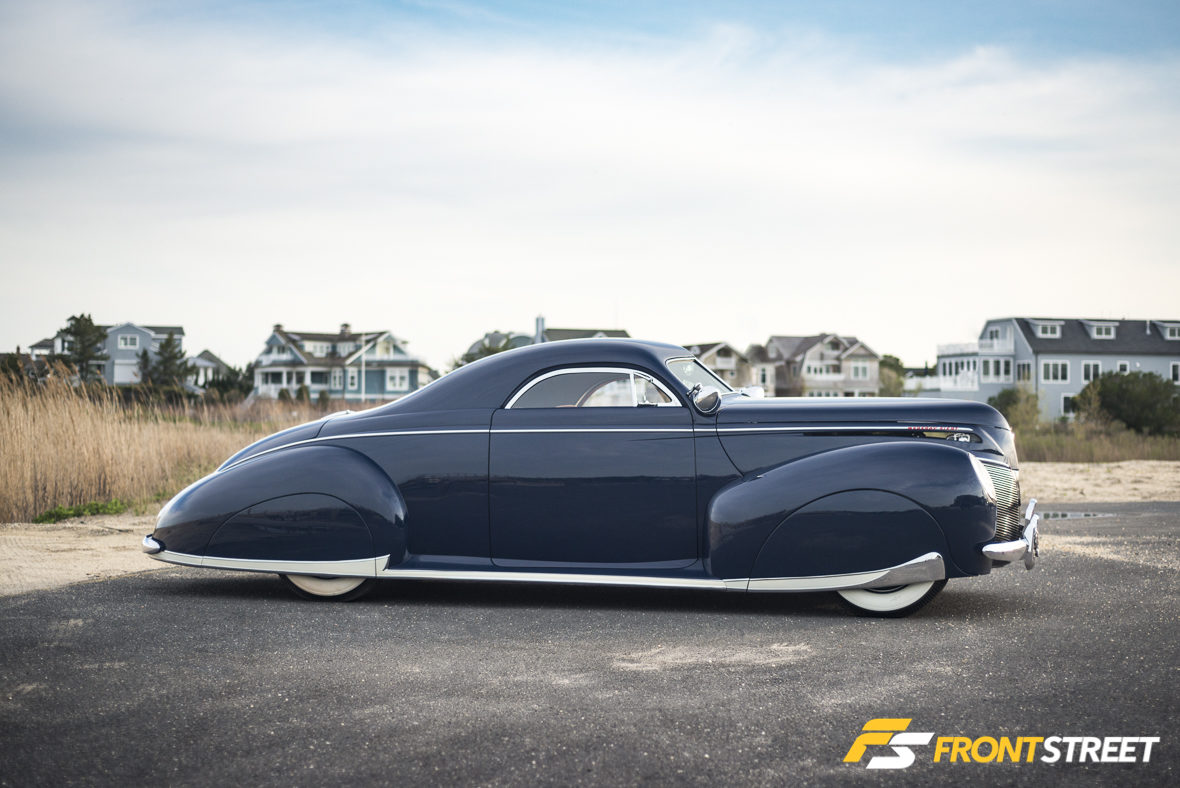
In 1949, Nick Matranga dropped his Mercury off at Barris Kustoms with some unique ideas for modification including rear fender skirts, a chopped top, and curved hardtop windows. Unbeknownst to him at the time, is the impact this would have on Mercury builds more than half a century later.
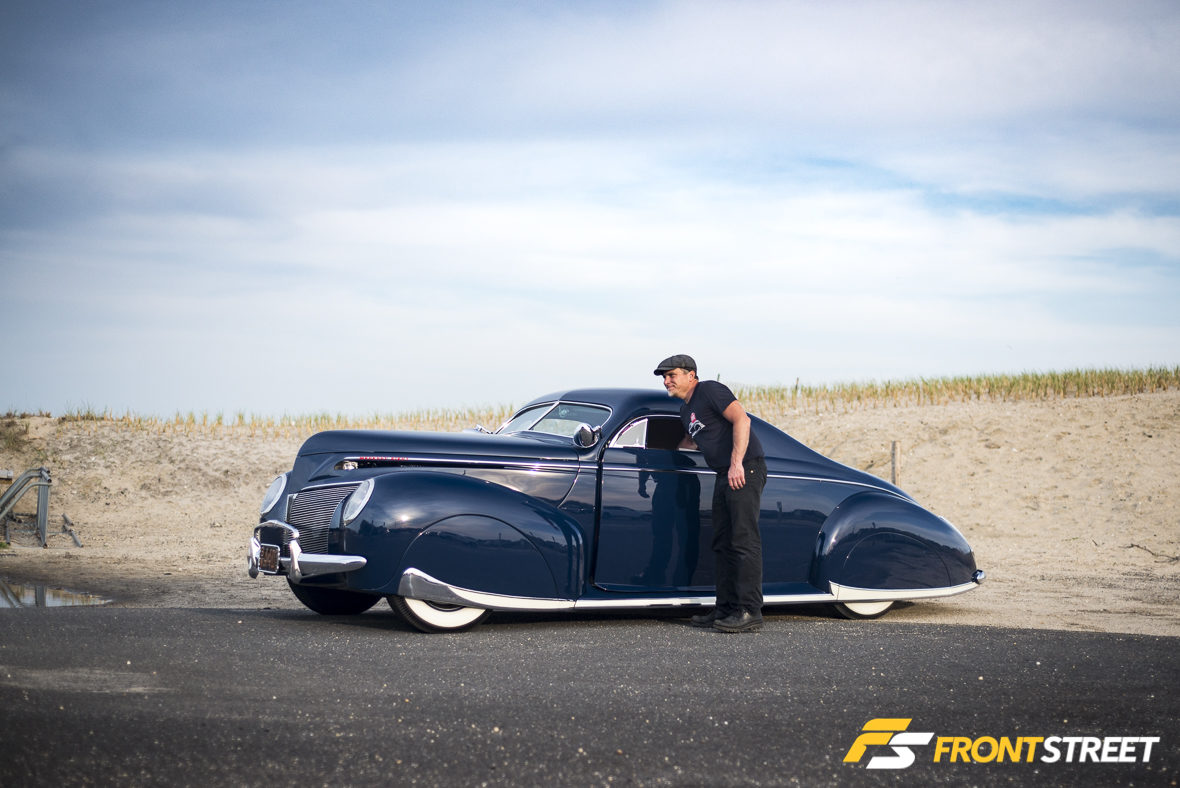
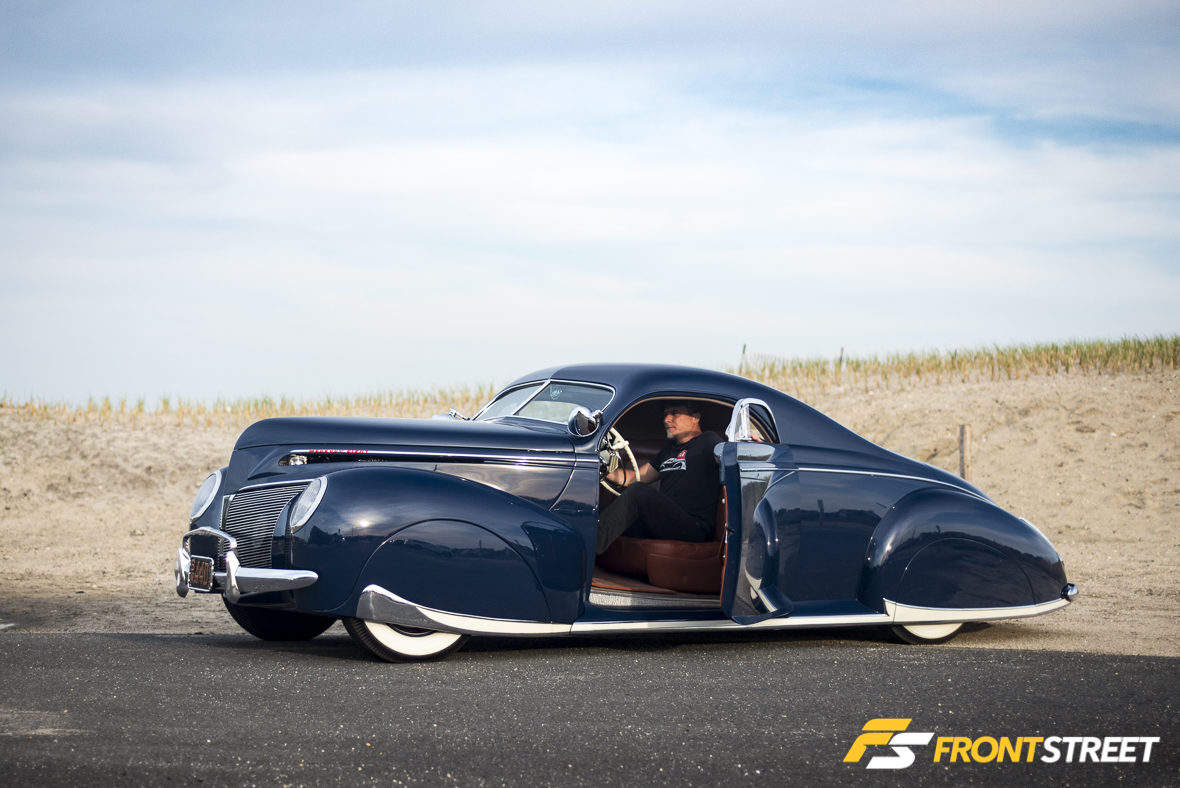
Fast-forward to 2010, when Jack Kiely, owner of J.F. Kiely Construction, found a 1940 Mercury Eight at an old Mercury dealership in Iowa. As a lifetime lover of hot rods and customs, Kiely knew it served as the perfect base for his next project. He enlisted the help of a longtime friend and fellow car collector, Rob Ida, to build his dream. If the name Rob Ida sounds familiar, it’s because we featured his classy 930-chassis Porsche 911 Turbo earlier this year. Ida, of Rob Ida Concepts and IDA Automotive, builds dream cars on a daily basis for various clienteles.
Having already built a few cars for Kiely, once the Mercury arrived at the shop, Ida and Kiely examined it for weeks determining the shape of its future.
“We knew that the quintessential 1940 Merc Custom was the Matranga Merc by Sam Barris in the ‘40s. This is the car that has been copied, but never topped. Its chopped hard top and skirted fenders looked so perfect that no one ever dared to try any other approach,” said Ida.
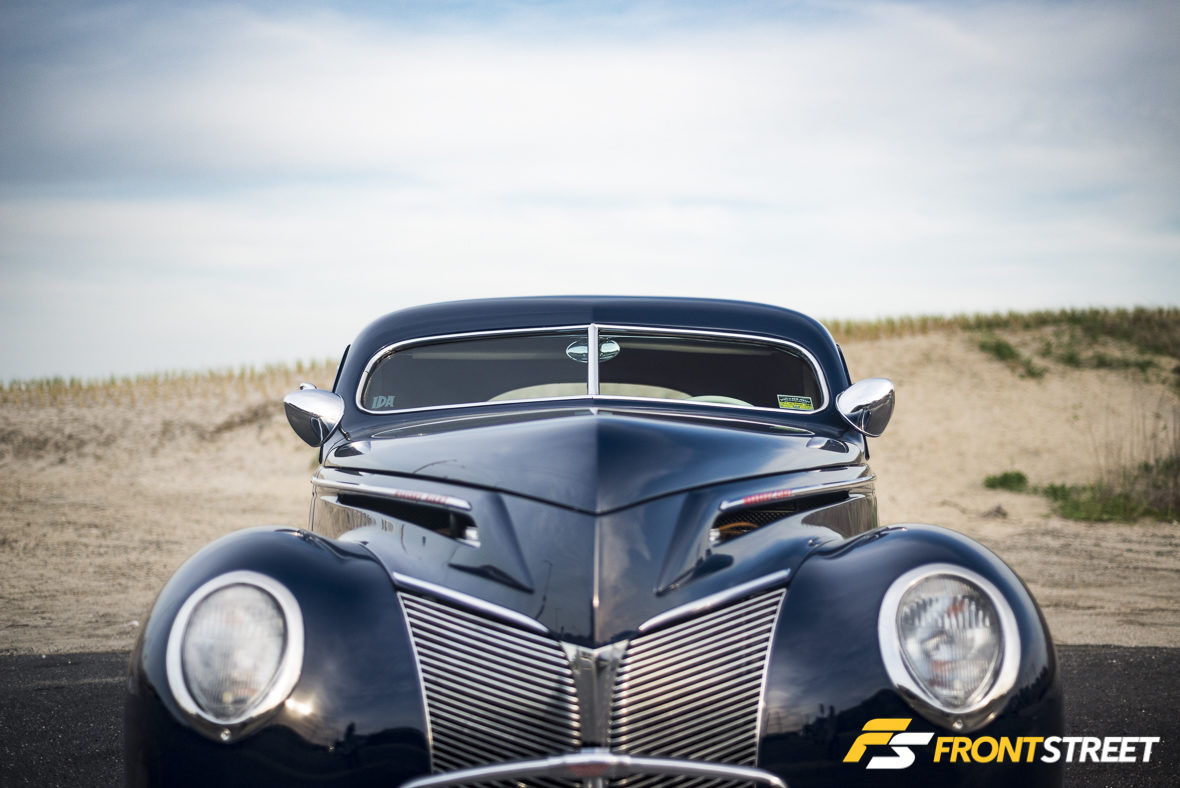
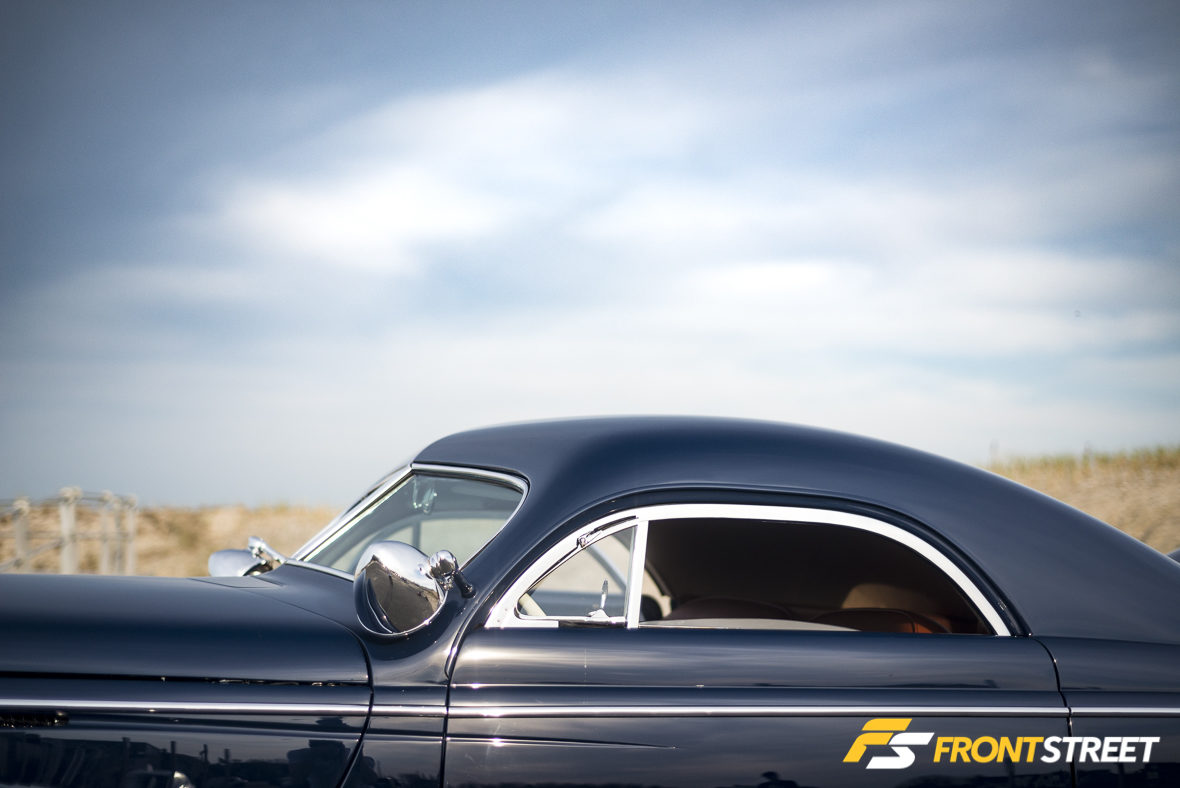
The pair thought back to when son of Henry Ford, Edsel, had the idea to bring on the Mercury marque as an elevated level of luxury and style—even at the displeasure of his father.
“Our thought here was, what if Edsel was able to properly design the Mercury coupe without being forced by Henry to repurpose left over roofs from 1938 Ford Coupes. He might have wanted to introduce the Mercury line at the Paris Auto Show. Maybe he would have gone to a French coachbuilder for his concept car,” recalls Ida.
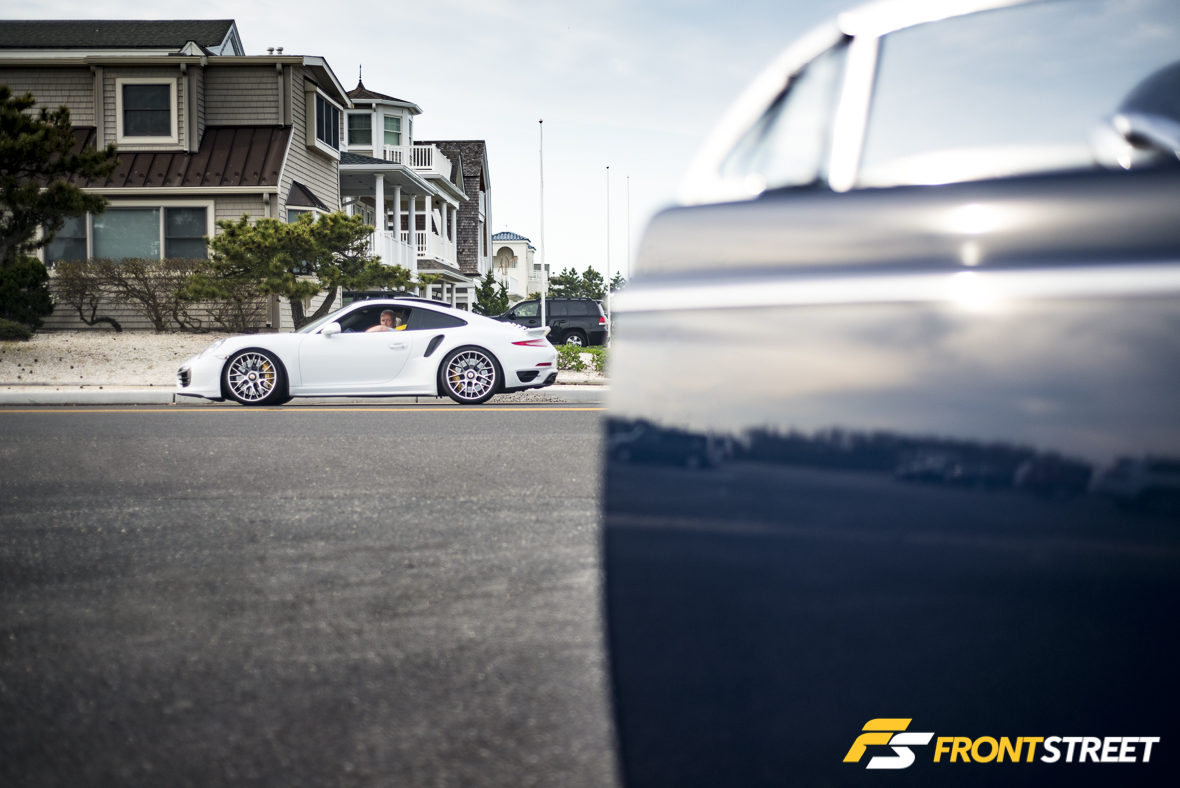
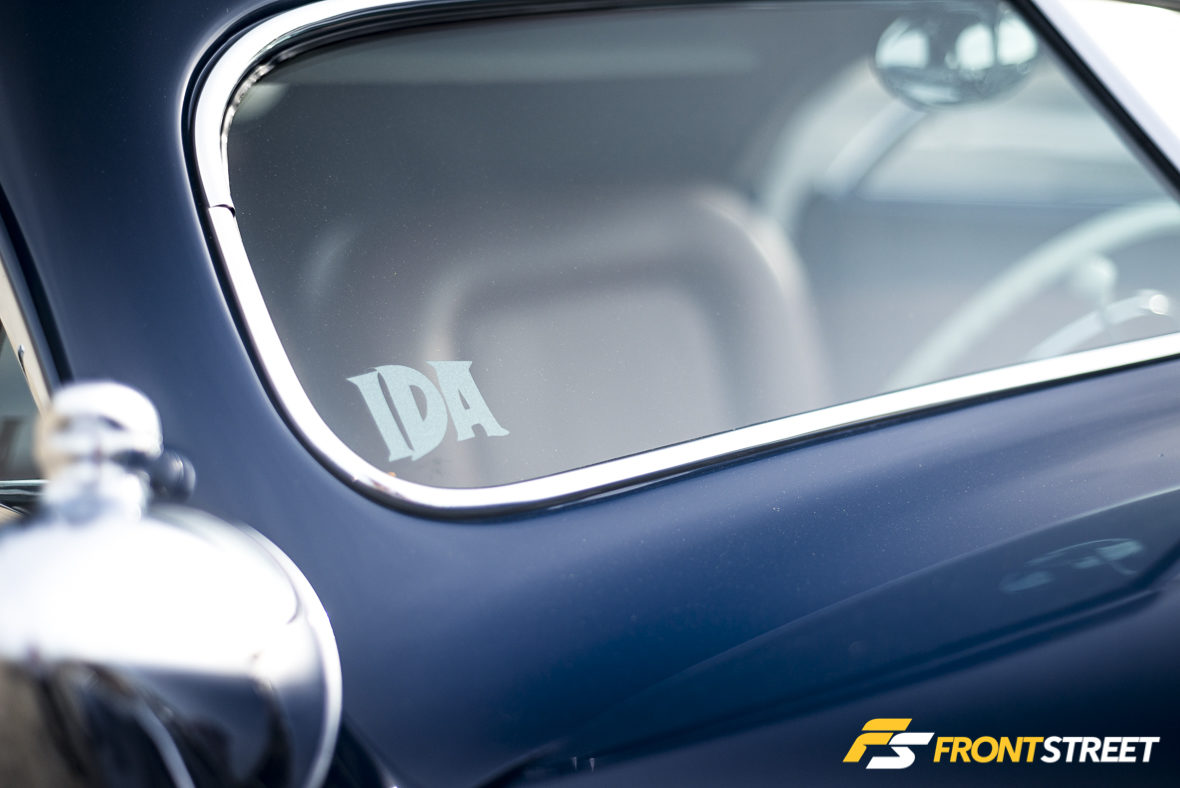
This got their project pointed in its own direction. It would blend the hot rod genes of Matranga’s Merc, with a classier, more sophisticated and elegant concept approach. The resulting body design would have the potential to break down barriers between hot rods and highly sought after concept cars. A coach built custom, which utilizes modern technology, yet remains visibly period correct sounds like a tall order but the team at IDA Automotive was eager to get started.
Now, a car like this is the onion of the automotive world. There are numerous layers to its completion, all containing their own separate projects, which eventually culminate in the end result.
Here is an image of a stock 1940 Mercury Eight. I want you to reference this as we highlight features of Kiely’s car, so you can begin to even fathom the amount of work it takes to create a clean example of this car, let alone a completely one-off variant.

Let’s get started with one of Ida’s favorite parts, which cannot be seen without the proper viewpoint, the belly pan. It has been handcrafted, by shaping vented polished metal along the entire frame of the car. An aspect that gently hints at the detail involved with building this car. Hidden beneath the artistic belly pan are the car’s bones—a beautiful tube chassis designed by Art Morrison.
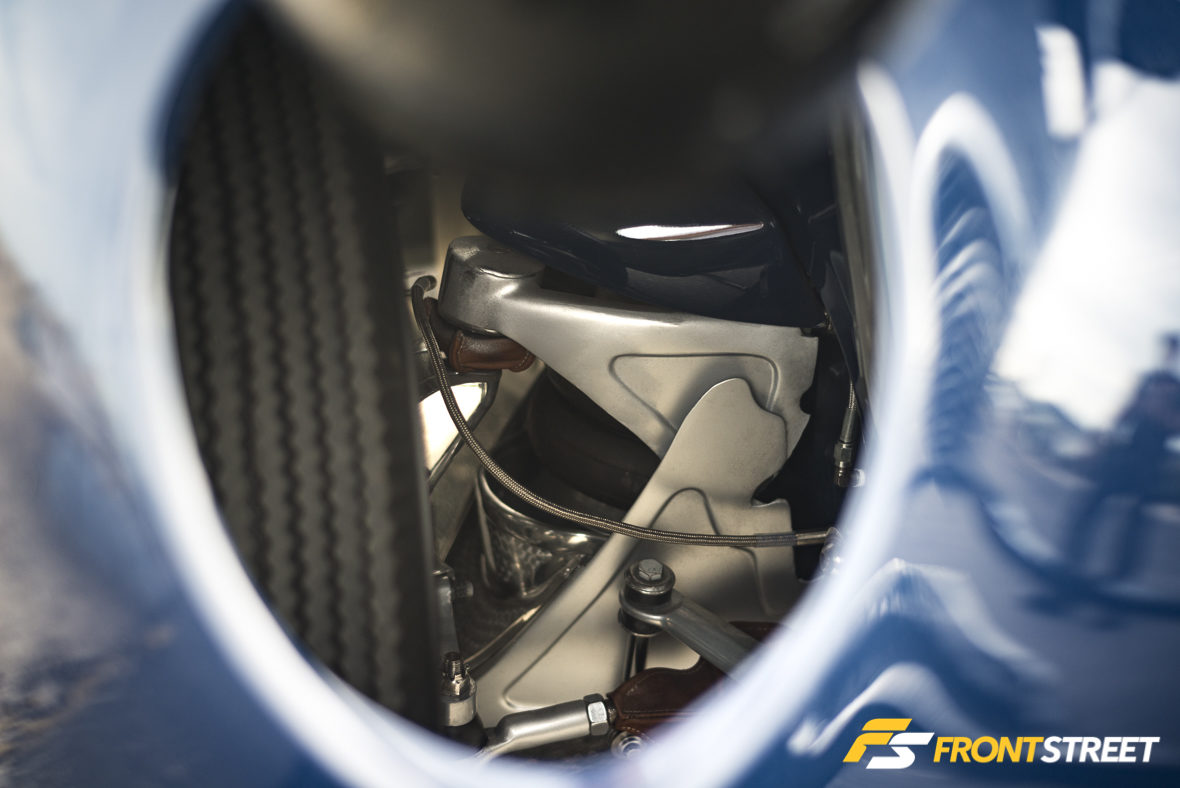
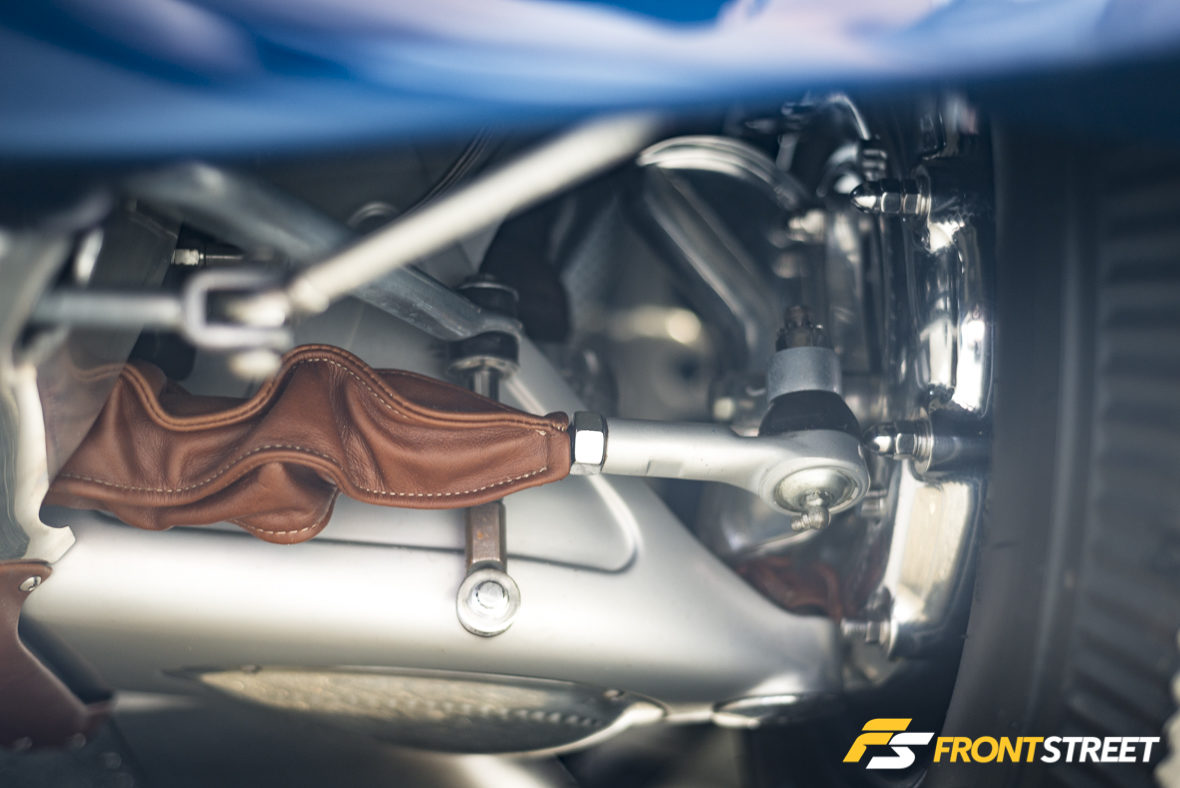
Moving into the suspension pieces, Rob’s father, Bob Ida used his expert machining skills to create the innovative tubular A-Arms. Again, these aren’t even visible by glancing at the exterior, yet pieces like the boots are enveloped in rich brown leather, and brushed aluminum. The car rides on Air Ride Technologies Suspension, and the bags tuck nicely inside the one-off arms.
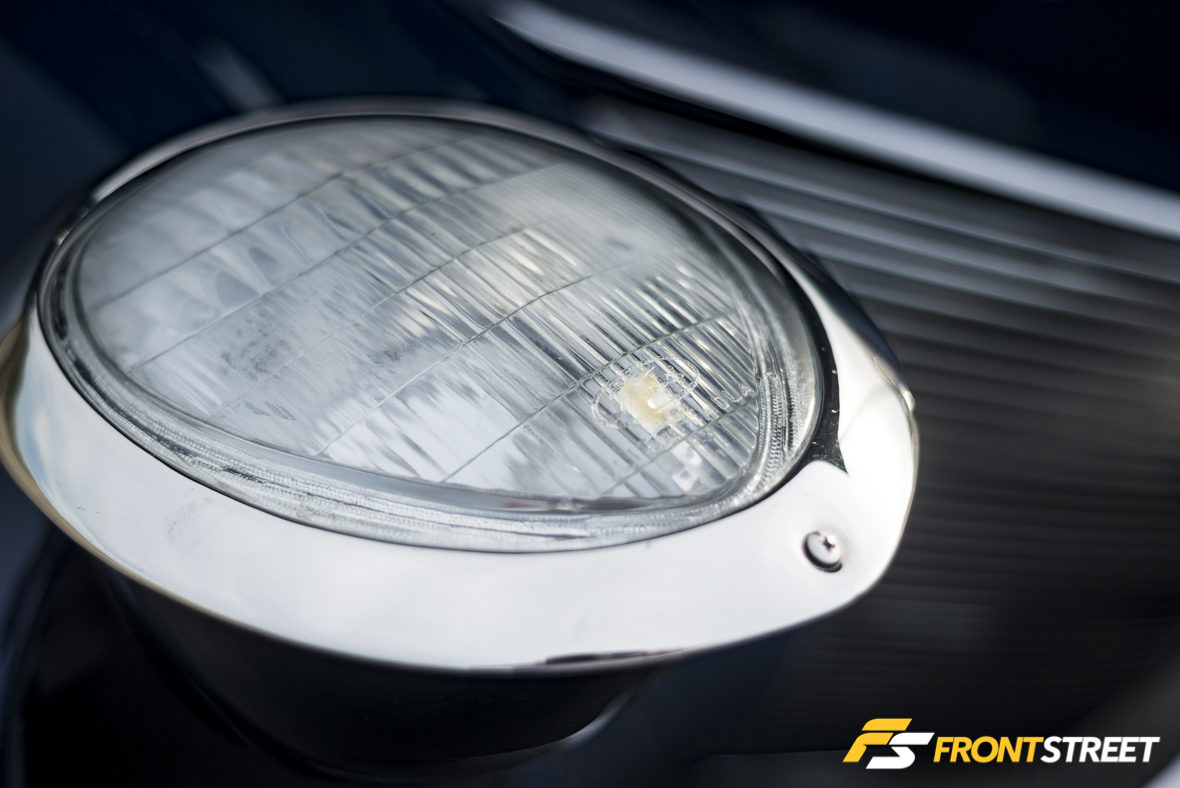
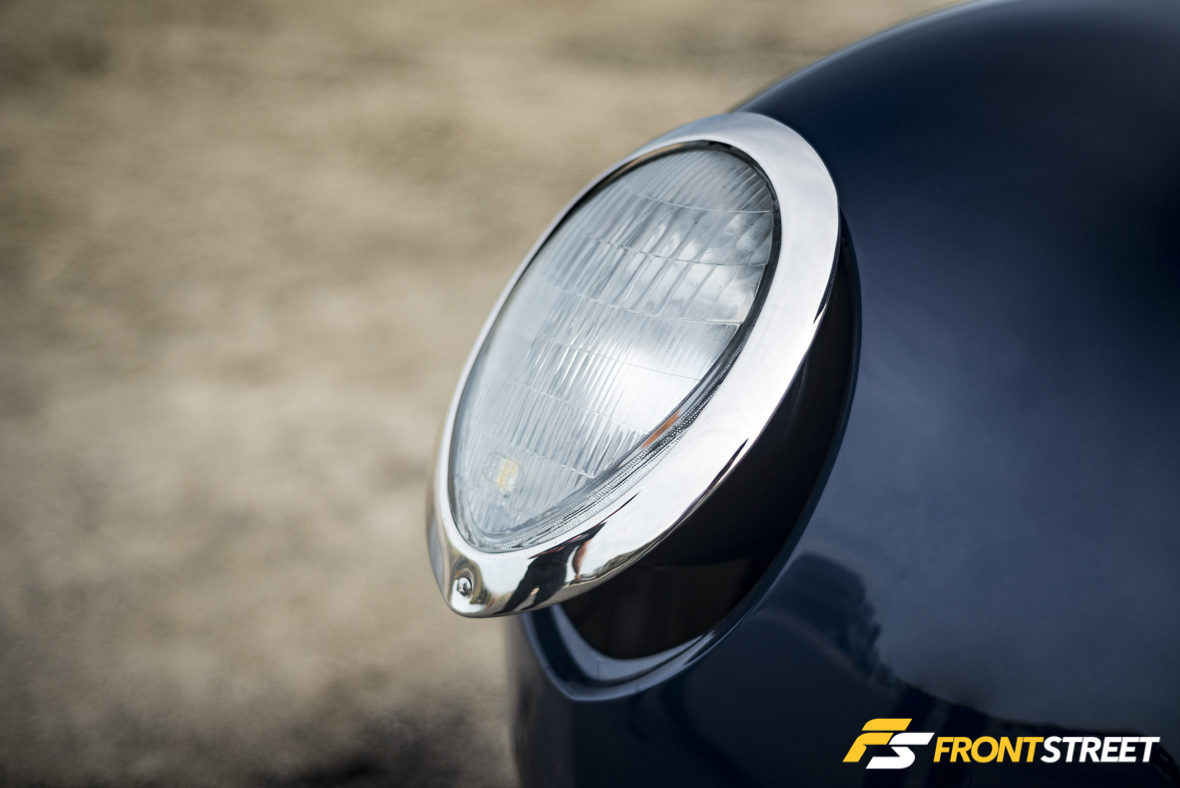
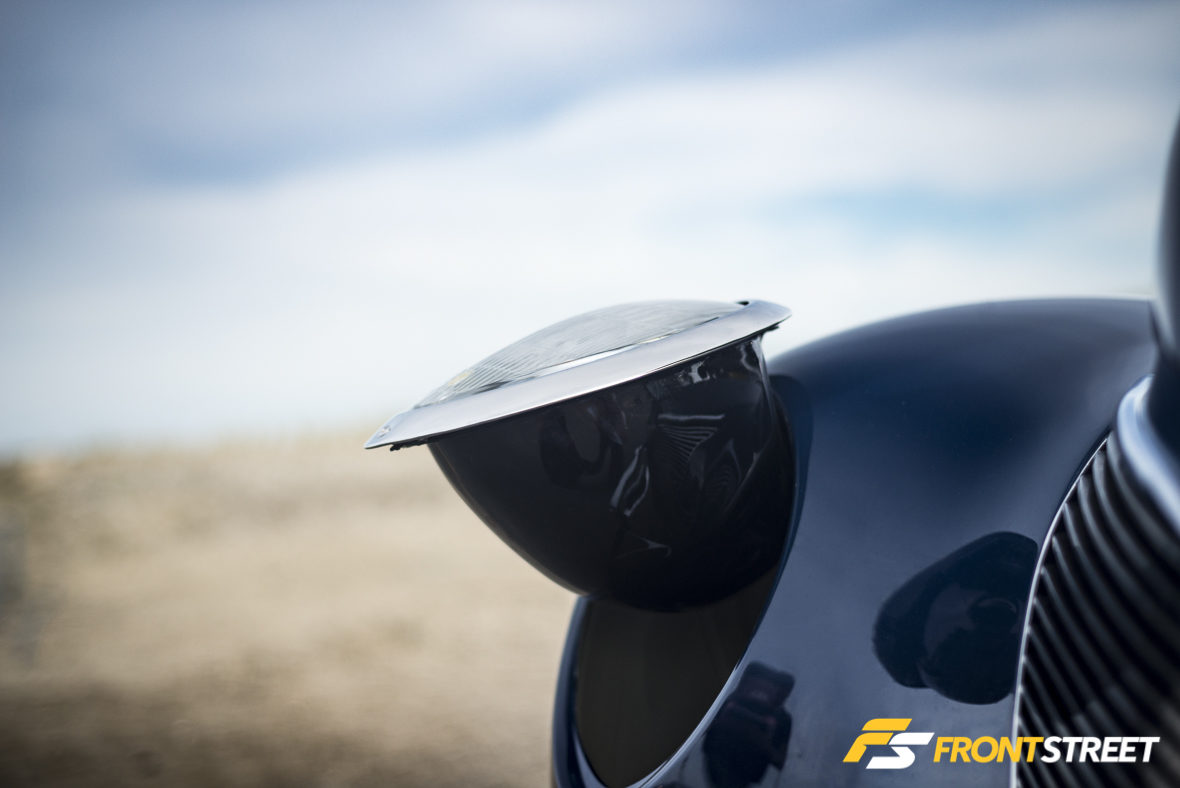
How do you show off beautifully crafted suspension pieces found behind the car’s fenders? With an interesting take on pop-up headlights, of course. These vintage Ford headlights contain a fancy touch sensor, which Ida places his thumb on to open the motorized headlight—it’s genius.
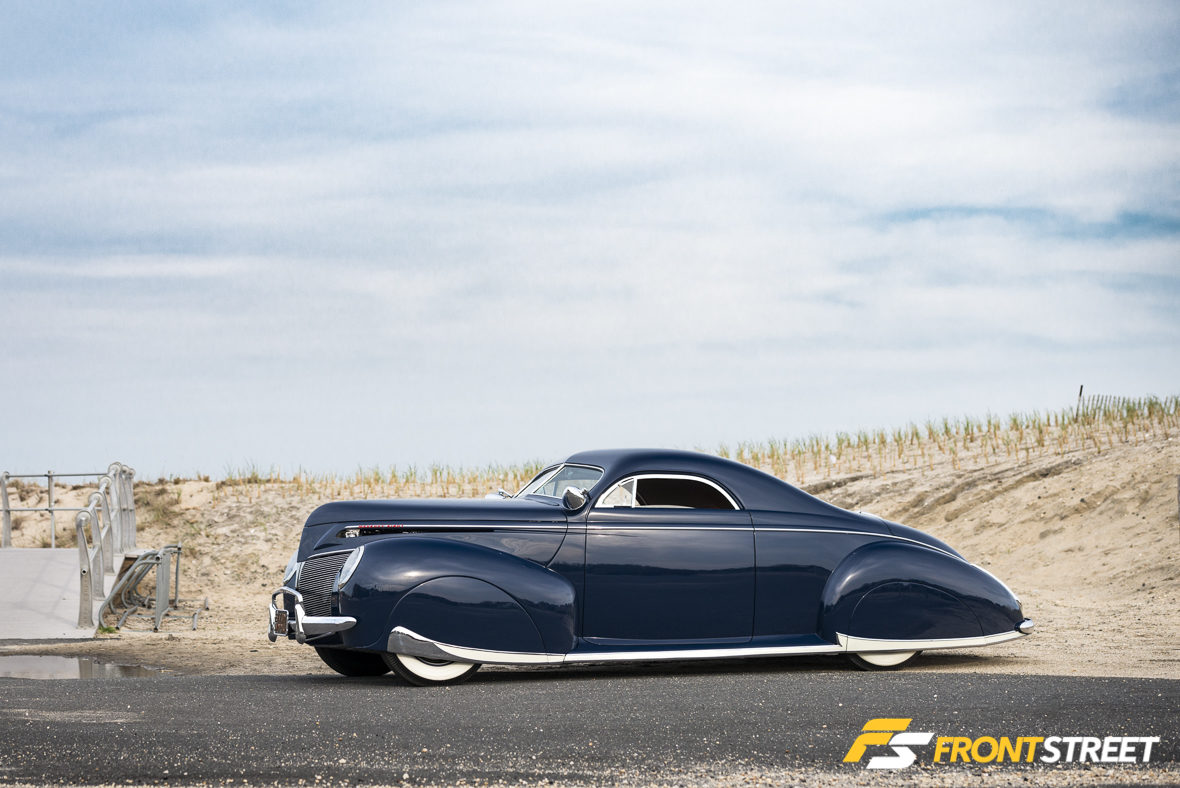
This is normally the part where I’d transition into talking about the wheel and tire setup. While the wheel setup on this car (designed and machined by Ida) is just as nice and intricate as the rest of the parts, which include some period correct Firestone whitewall tires. I’d rather talk about the visual delight in the place where the wheels are usually seen—the fender skirts.
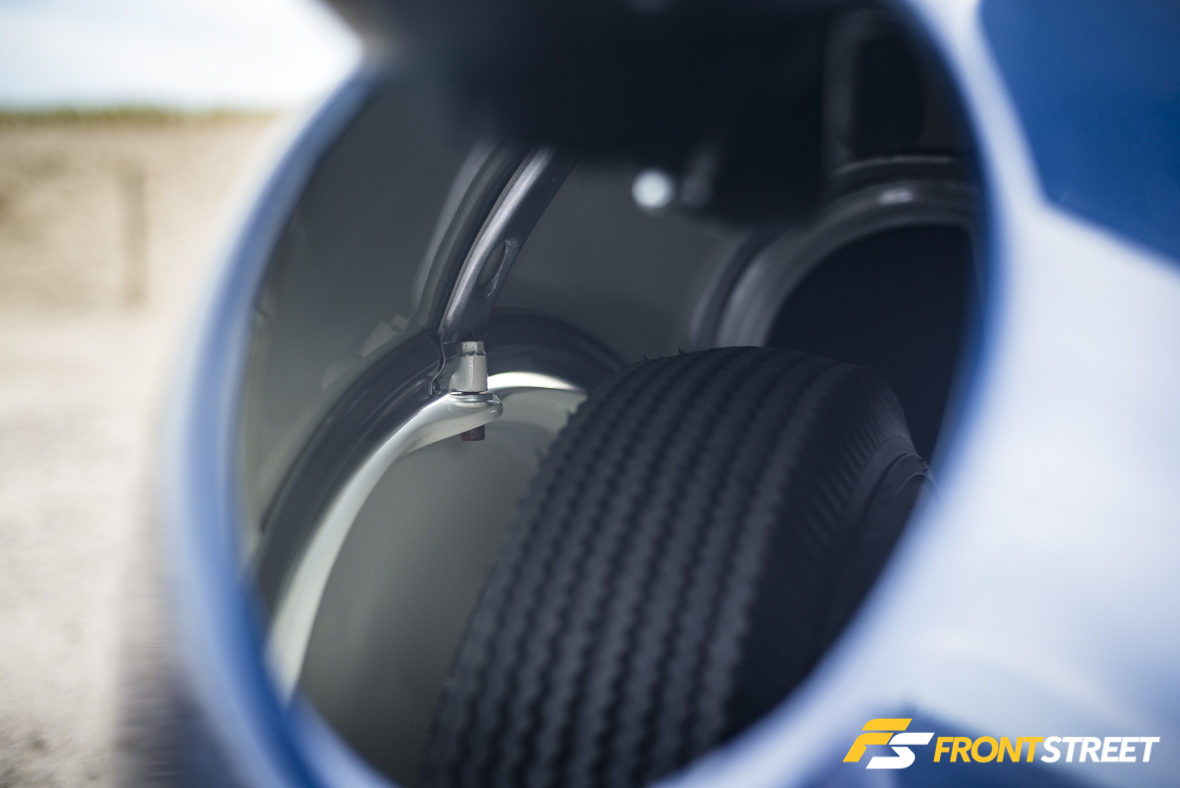
Another of Ida’s favorite pieces on the car—also the most difficult for him to make work properly and look correct, these perfect additions to the fender offer the smoothest bodyline overtop of a normally gaping hole. Usually only reserved for the rear, this detail oozes class, and further refines the swooping curves of the car. One thing you’ll notice about the Merc is it’s also equipped with front fender skirts.
Now you’re asking yourself, “If the front tire has a cover, how does the car turn? Does it even turn?” Yes, it does.
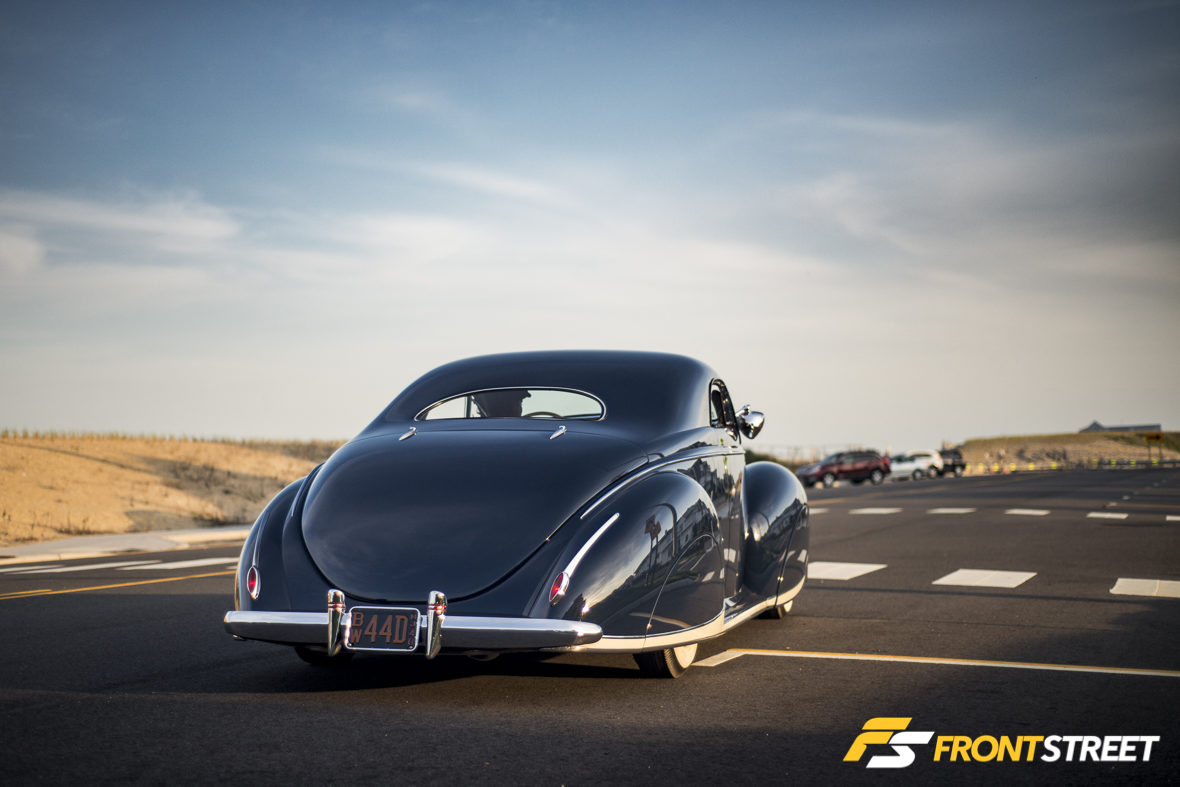
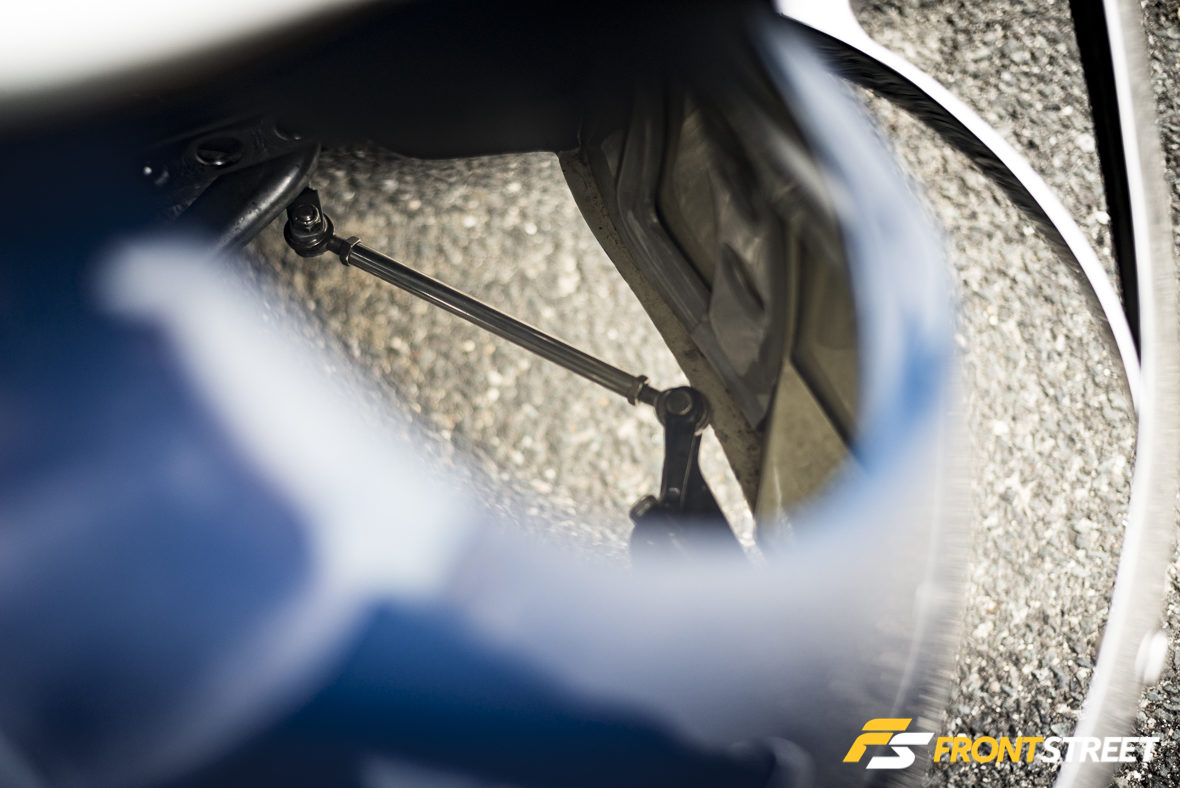
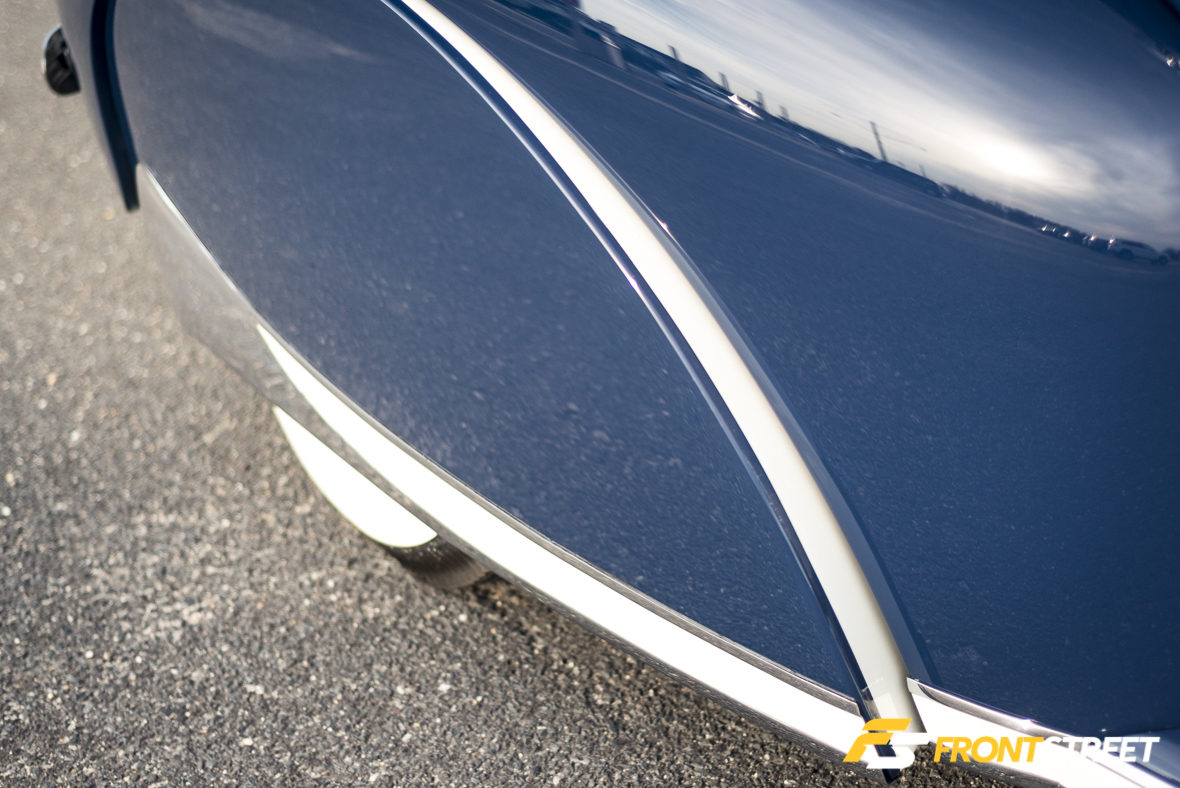
To which you’re now asking, “Yeah, but what’s the turning radius like inside of those covers?” Well, it’s quite good. But that’s not due to a skinny tire and rounding of metal edges. Ida instead took it upon himself to design a secondary steering rack specifically for the car’s front fender skirts. It works by tying into the custom-made rack and pinion steering for the wheels, taking the input and applying it to a secondary rack, which controls the front fender skirts. Yes, they’re mobile. After countless hours of adjustment, this masterful creation sanctions the fender skirts to steer at the same ratio that the wheels are being turned, allowing a seamless transition from straight to turned along the same axis as the car. It makes something as simple as taking a turn, into a beautiful composition of moving parts.
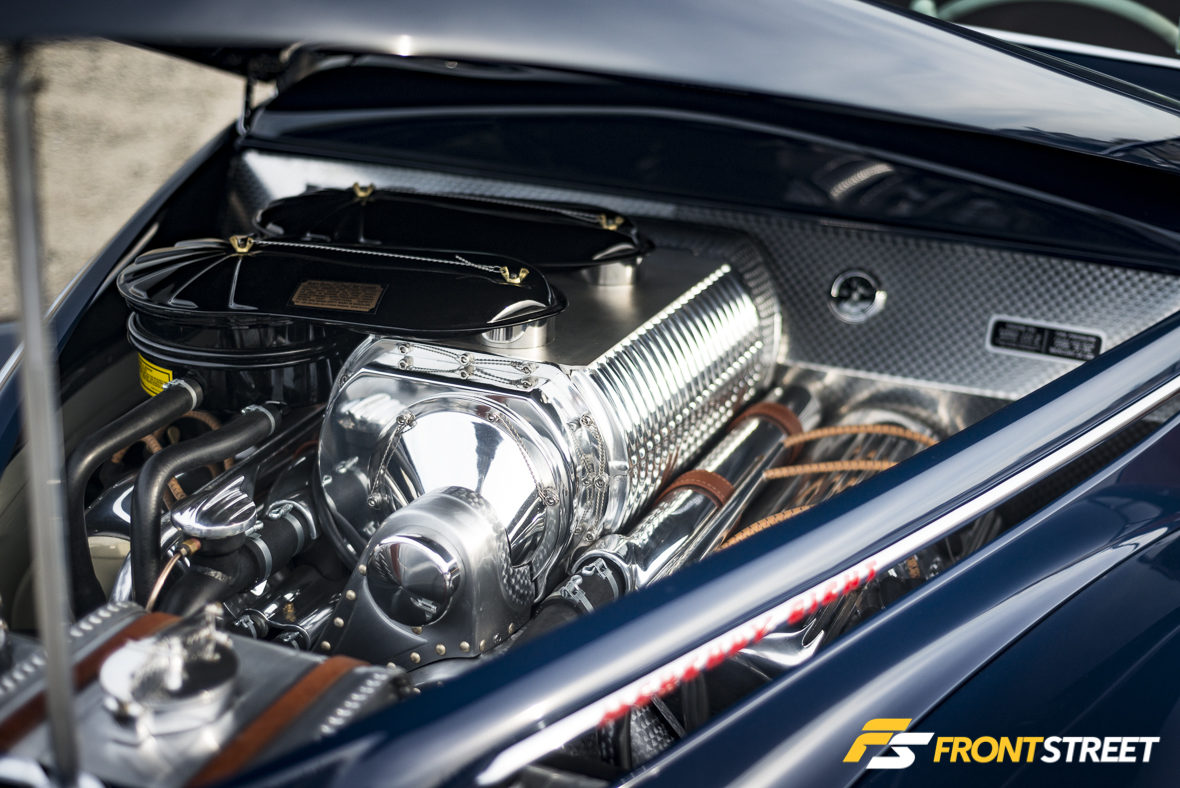
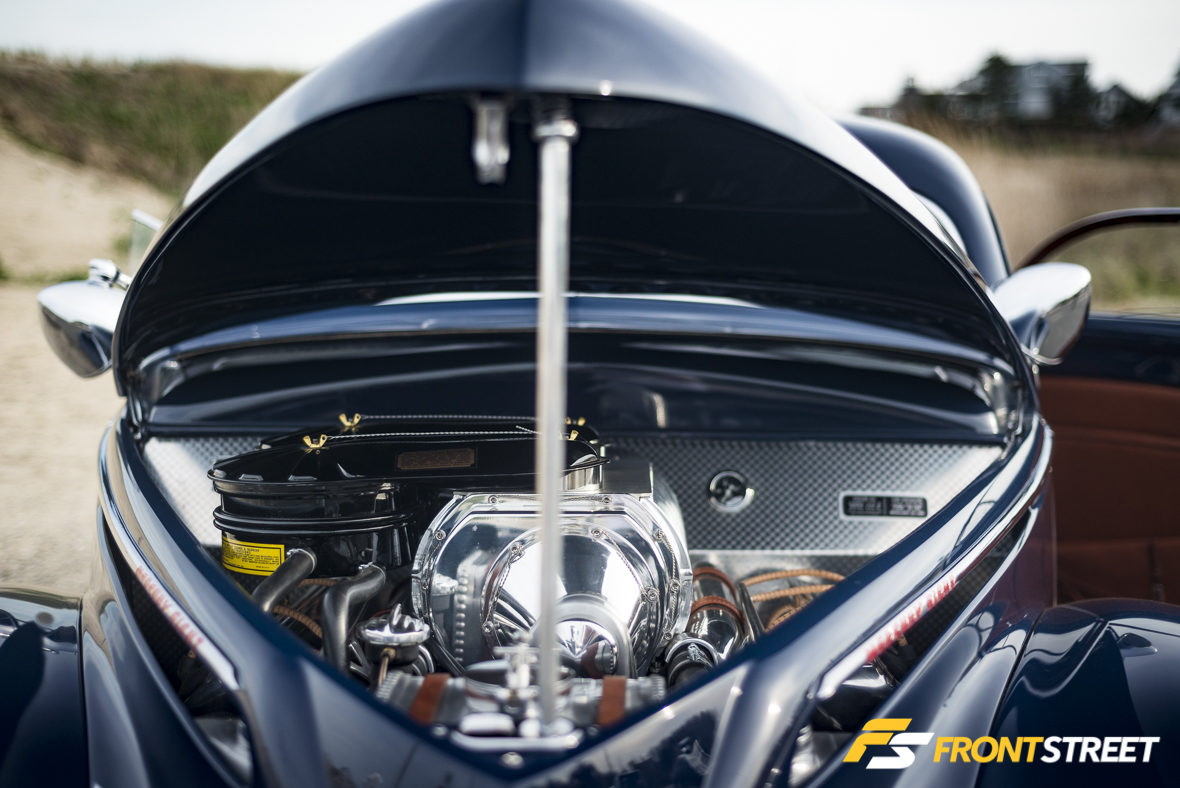
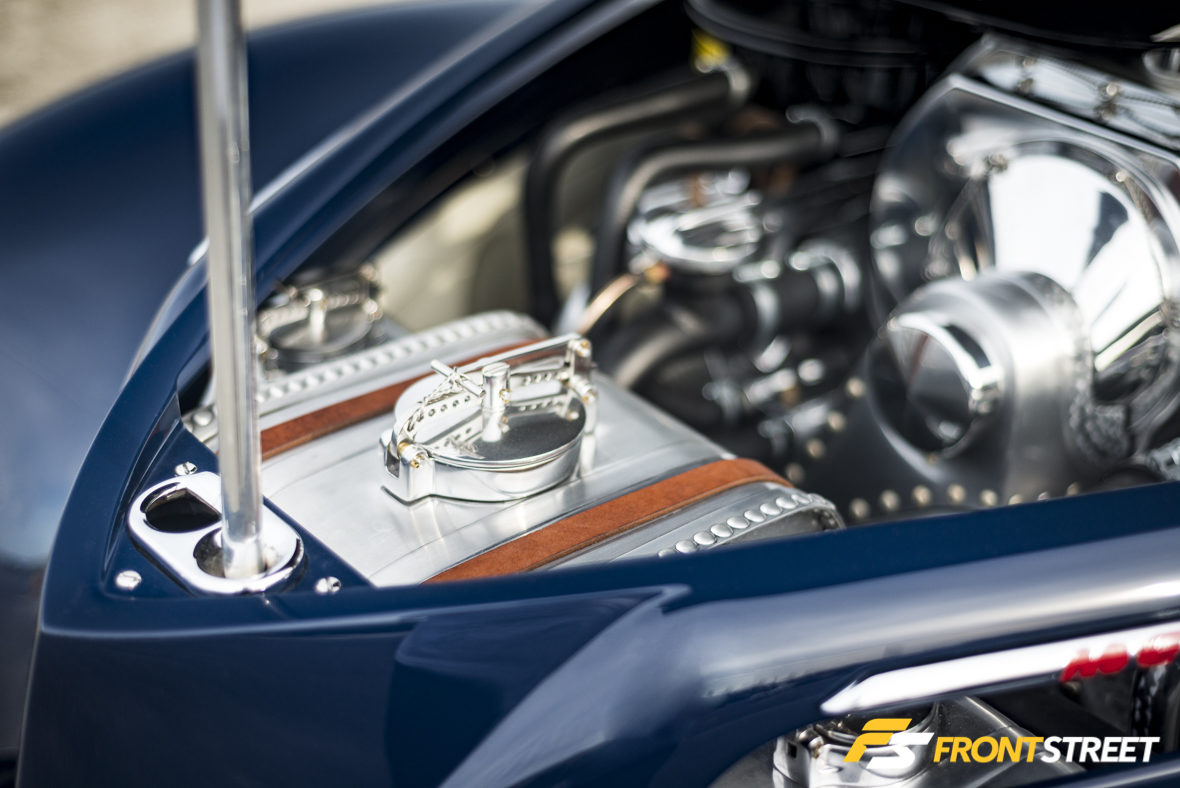
Can we talk about the exterior of the car? Not yet, let’s discuss the propulsion located in the engine bay, which powers this creation. It’s a heavily disguised 5.4-liter Ford Motor Co. crate engine from a 2009 Shelby GT500, and produces a stout 660 hp thanks to the shrouded Eaton supercharger resting atop. If the handmade period correct modifications and covers on this modern powerplant aren’t enough to tickle your fancy, how about the incredible attention to detail seen throughout the bay?
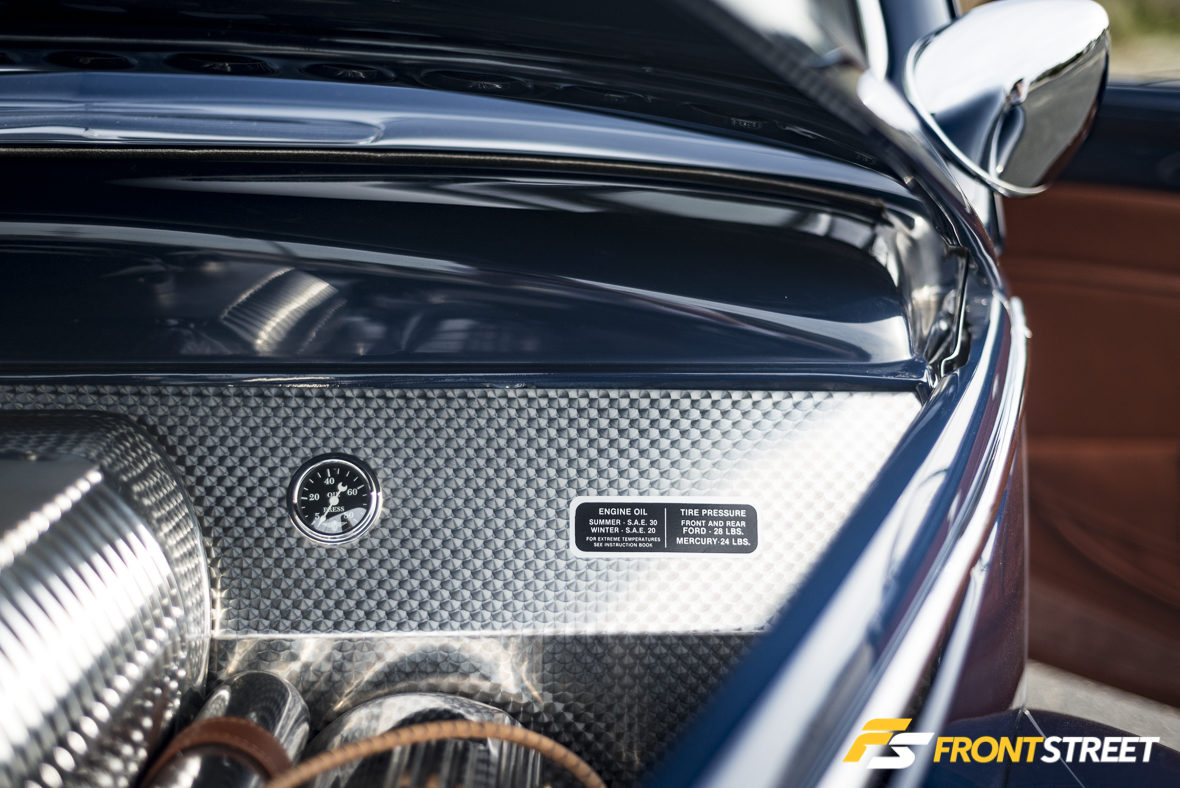
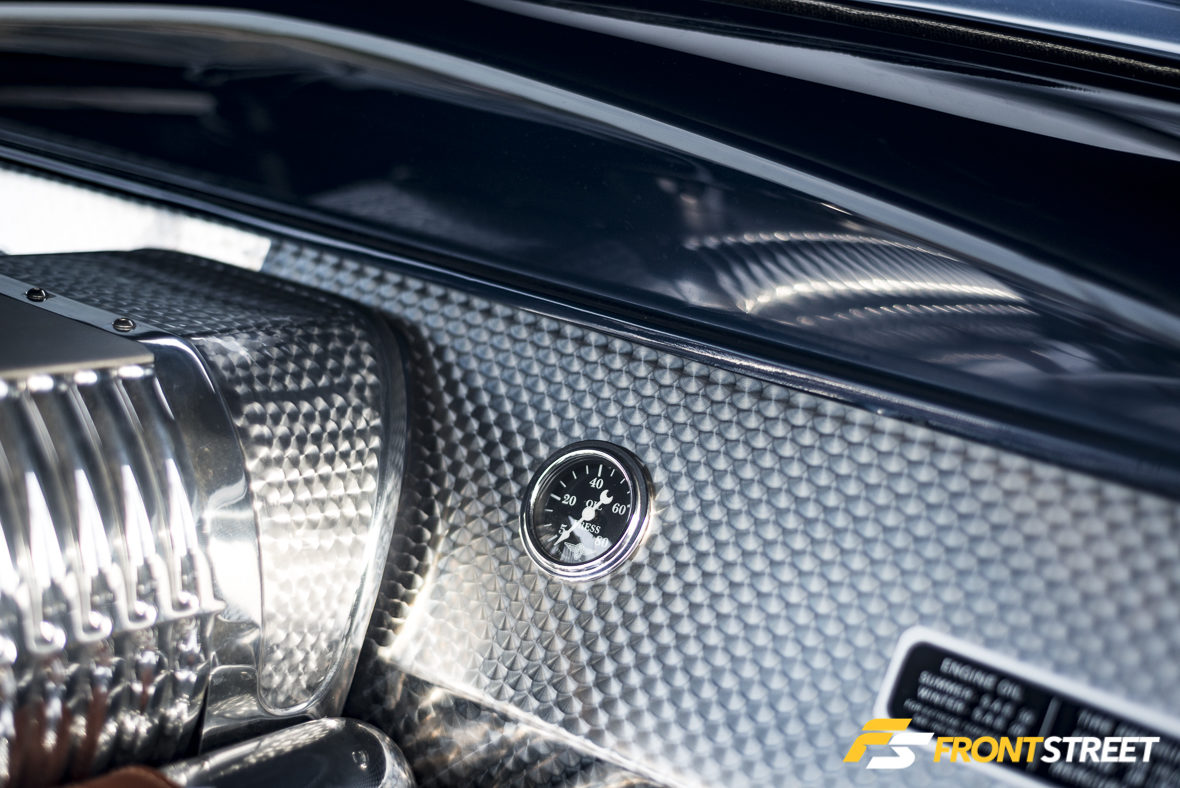
Every single aspect is completed in a premium finish, utilizing leather straps, perfectly aligned rivets, or stunning handmade engine turned aluminum (the circular brushed metal on the firewall). I’m still wondering how on Earth this was done so flawlessly on such a large piece?
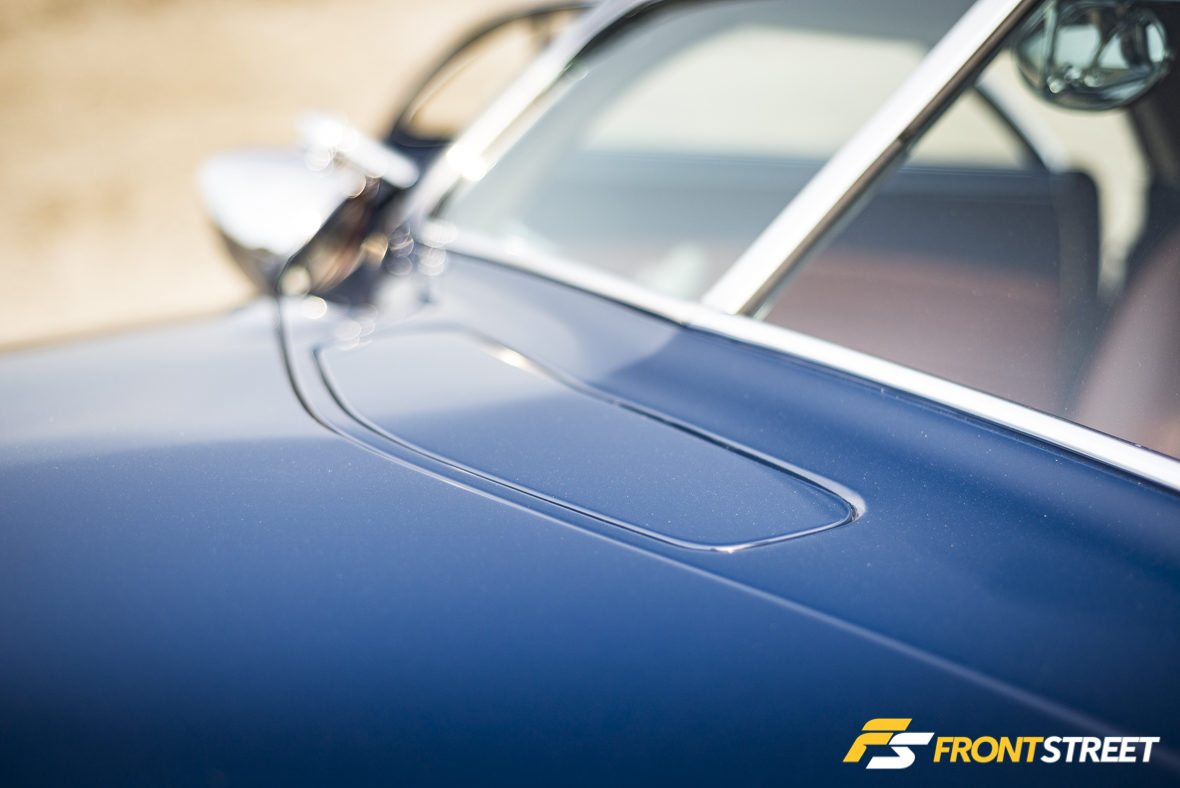
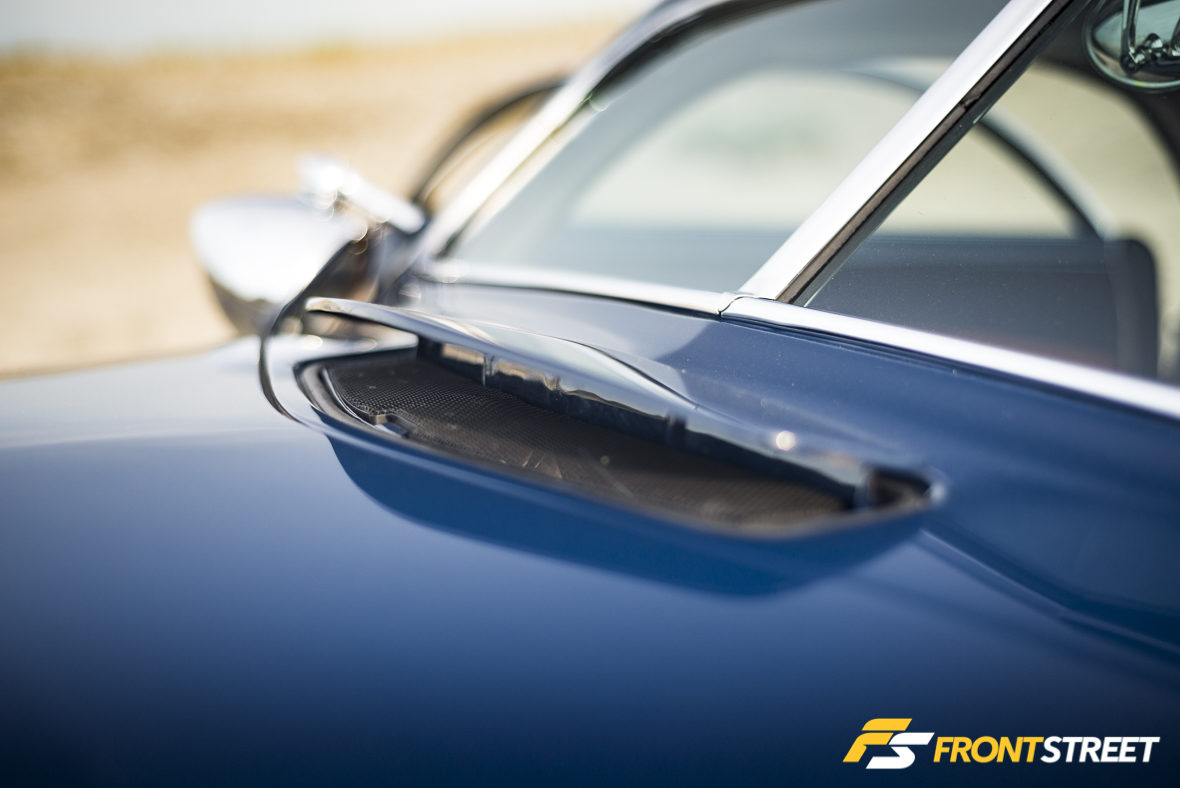
Oh, and what is normally the fresh air vent located behind the hood has been repurposed as an air intake for the engine, which—similar to the fender skirts—takes inputs from the throttle and opens the vent accordingly.
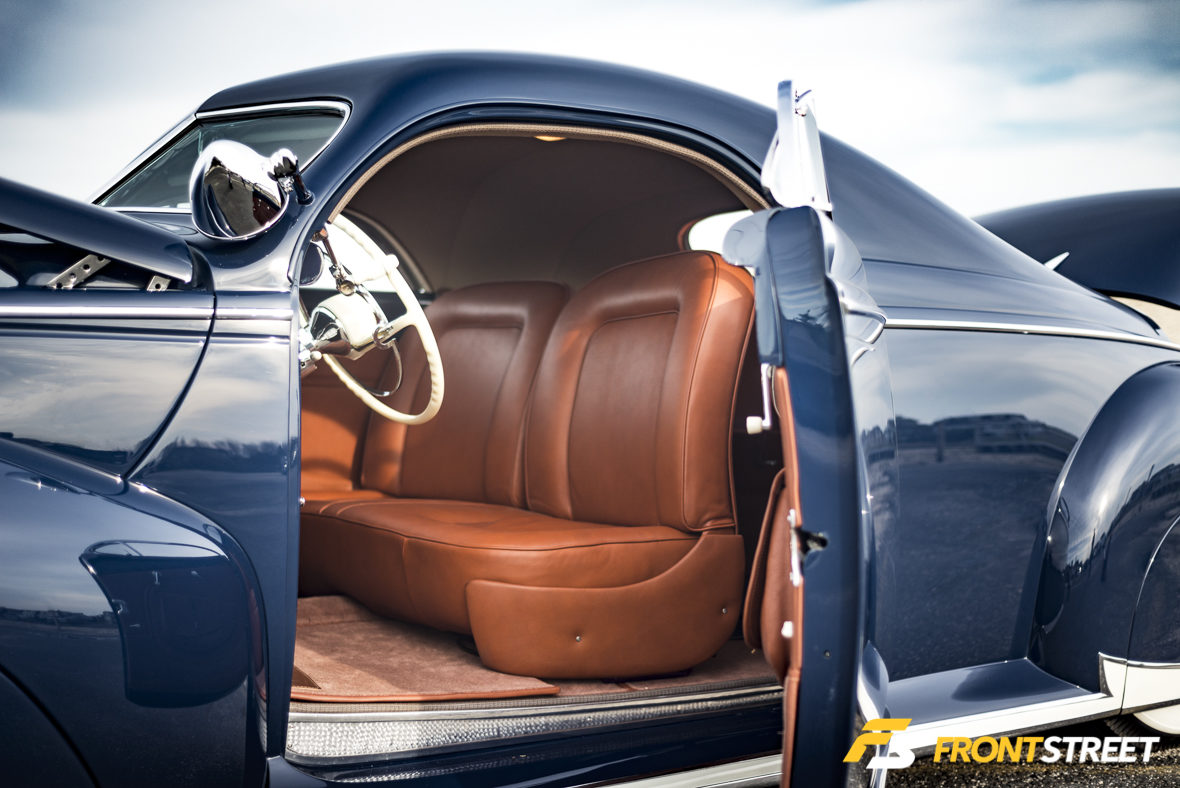
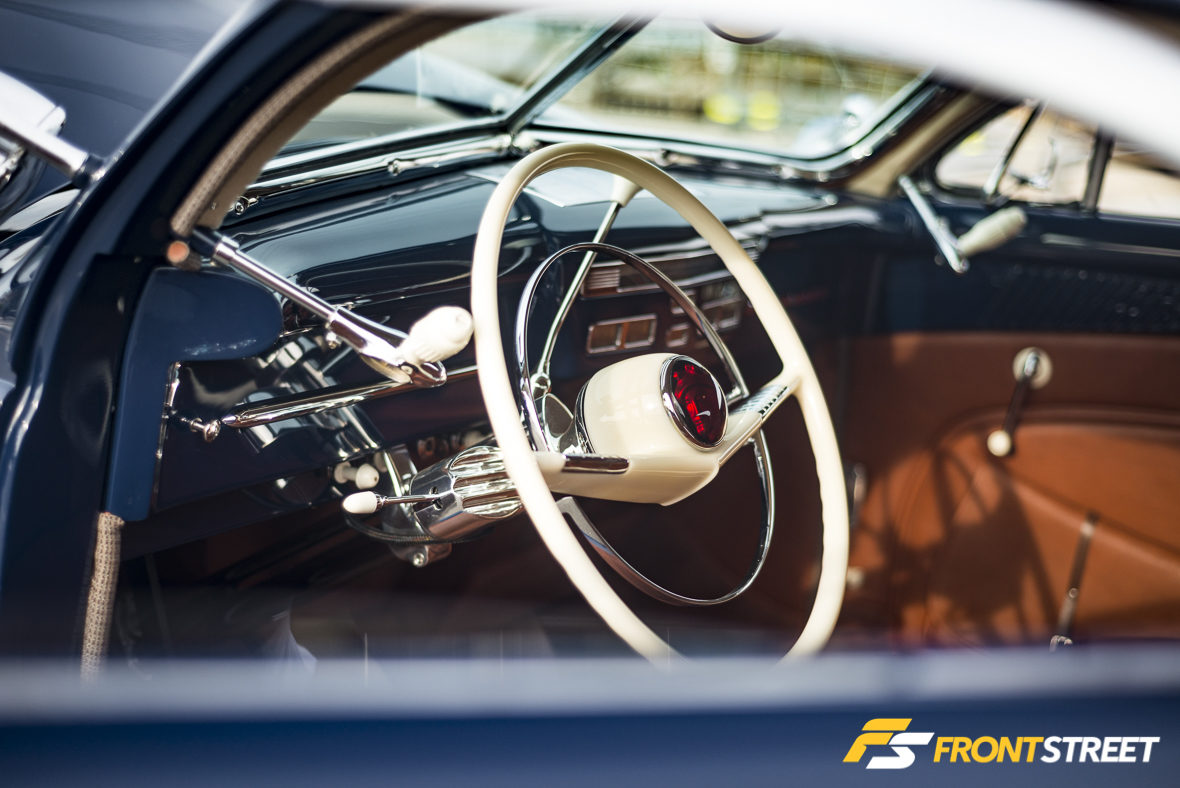
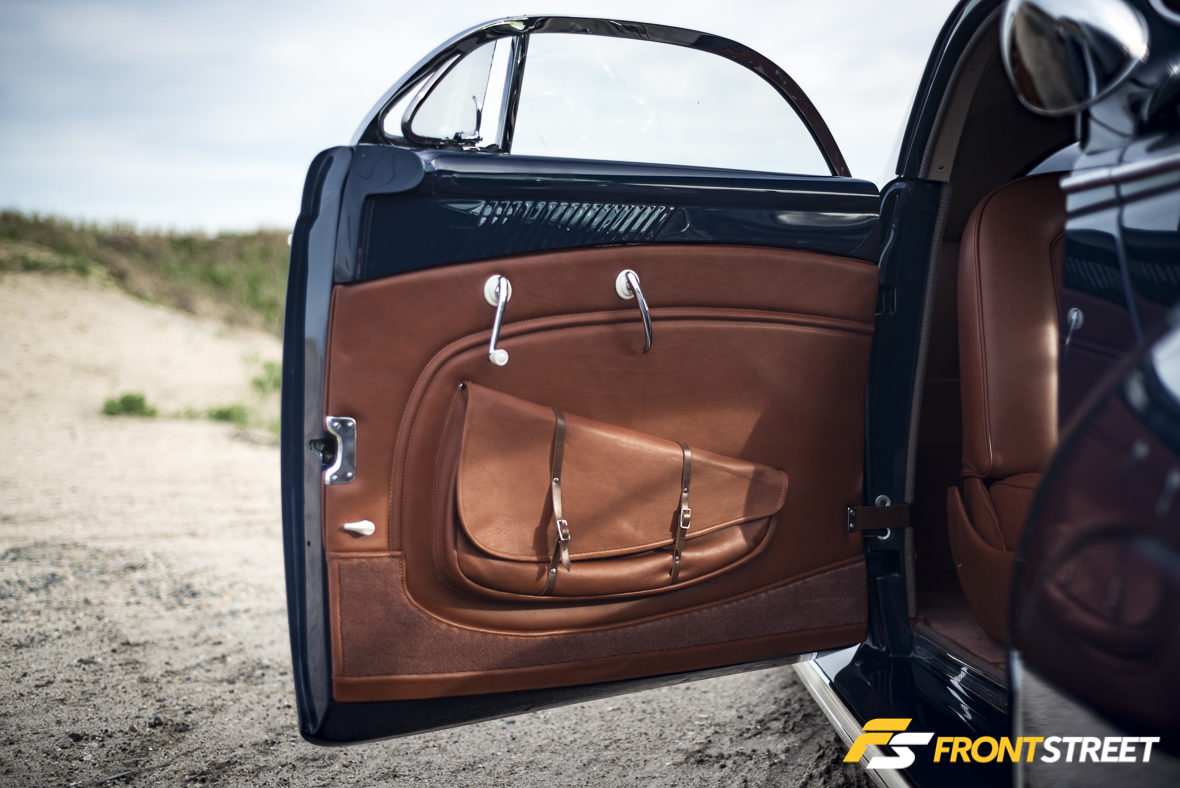
Now will I talk about the exterior? Negative. On the interior, the duo chose this wonderful combination of brown leather and carpet to wrap every inch of the cockpit and complement the exterior color. The original seats were reupholstered, while a Mercury Monterey Accessory wheel was affixed to the steering column to keep the period correct flow.
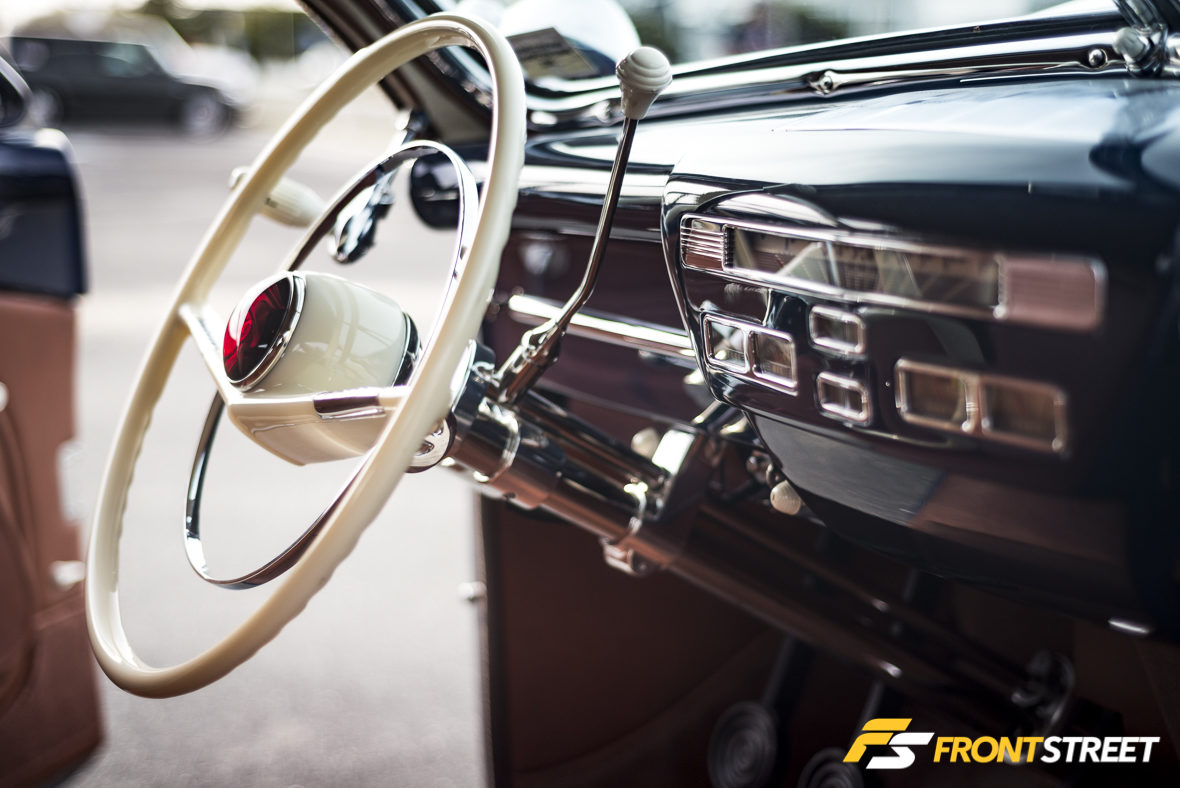
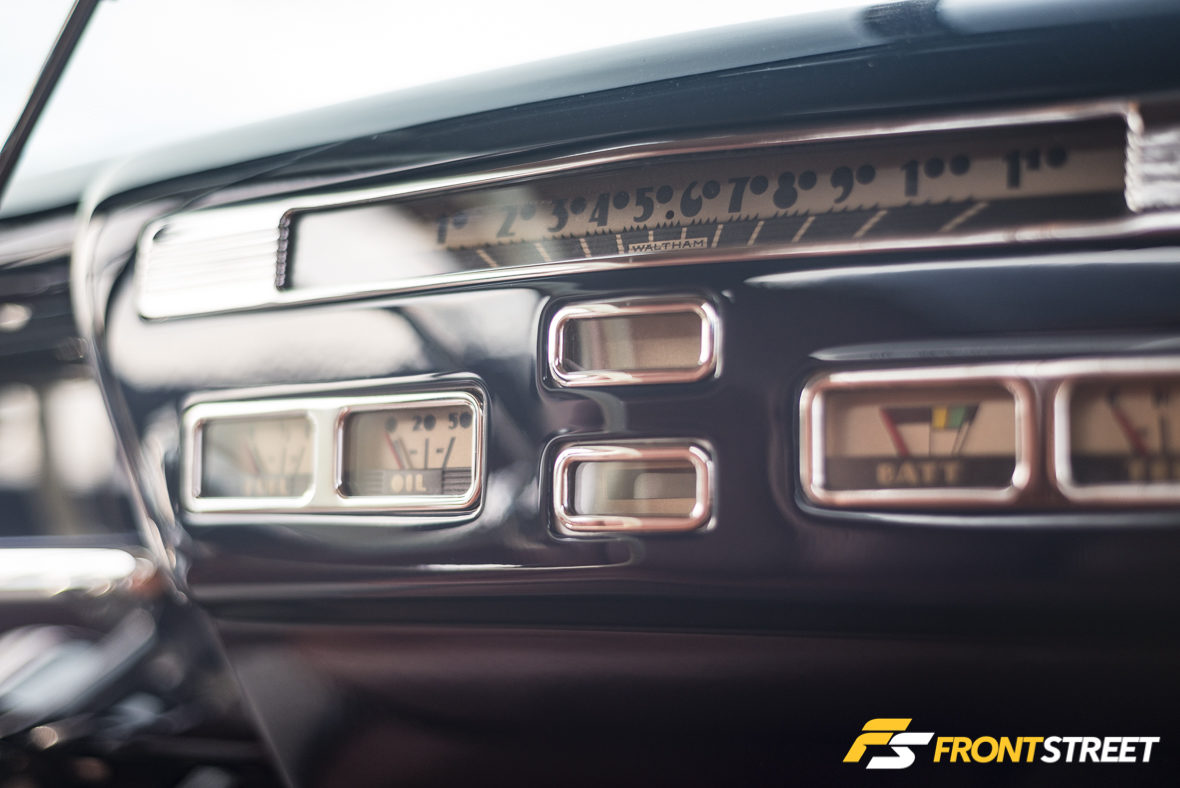
Also, notice the instrument panel was relocated to the center of the dashboard instead of directly behind the wheel. It’s details like this, which show some of the mastery behind the build. Back when things like instrument panels were design projects instead of created with ergonomics in mind, they deserve to be seen.
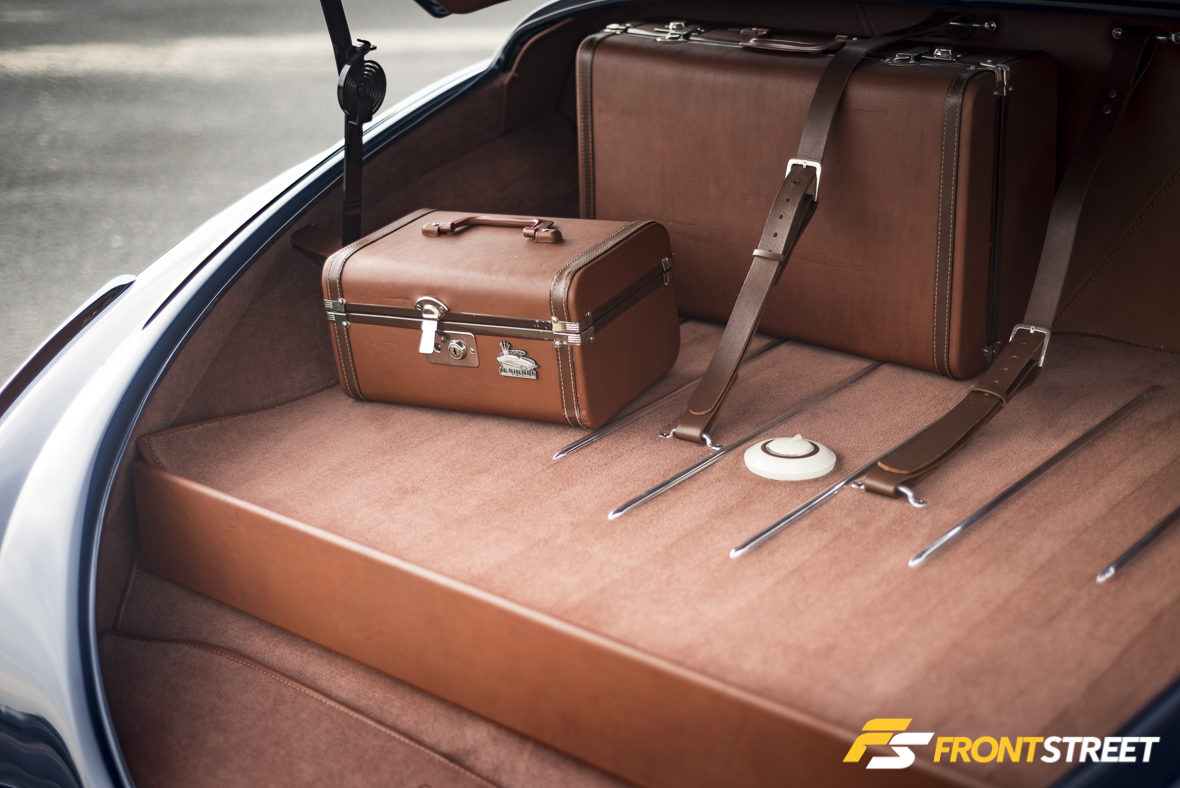

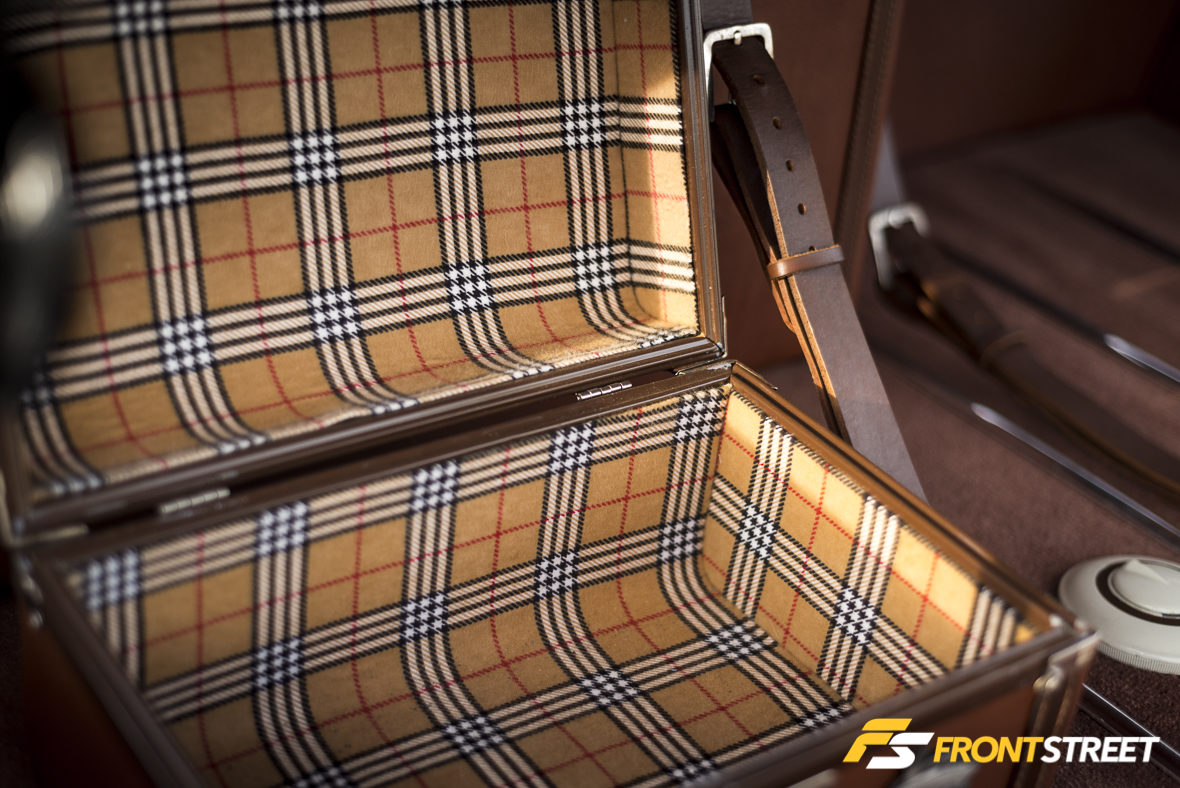
It doesn’t end there, though. The matching leather was used in the creation of this unique luggage set, found behind the front seats, and in the trunk of the car. Furnished with an iconic Burberry plaid design inside, and adorned with a crest of Ida Automotive on the outside, these are the cherry on top of a impeccable interior treatment.
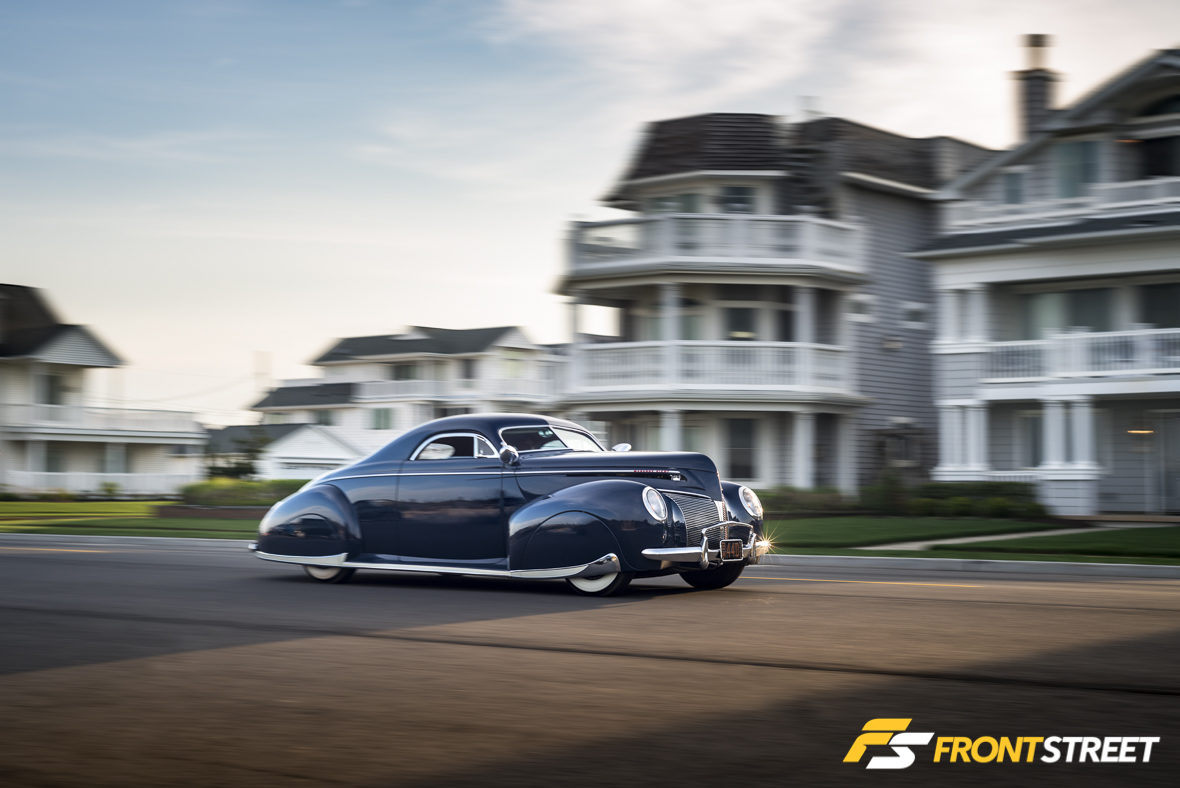
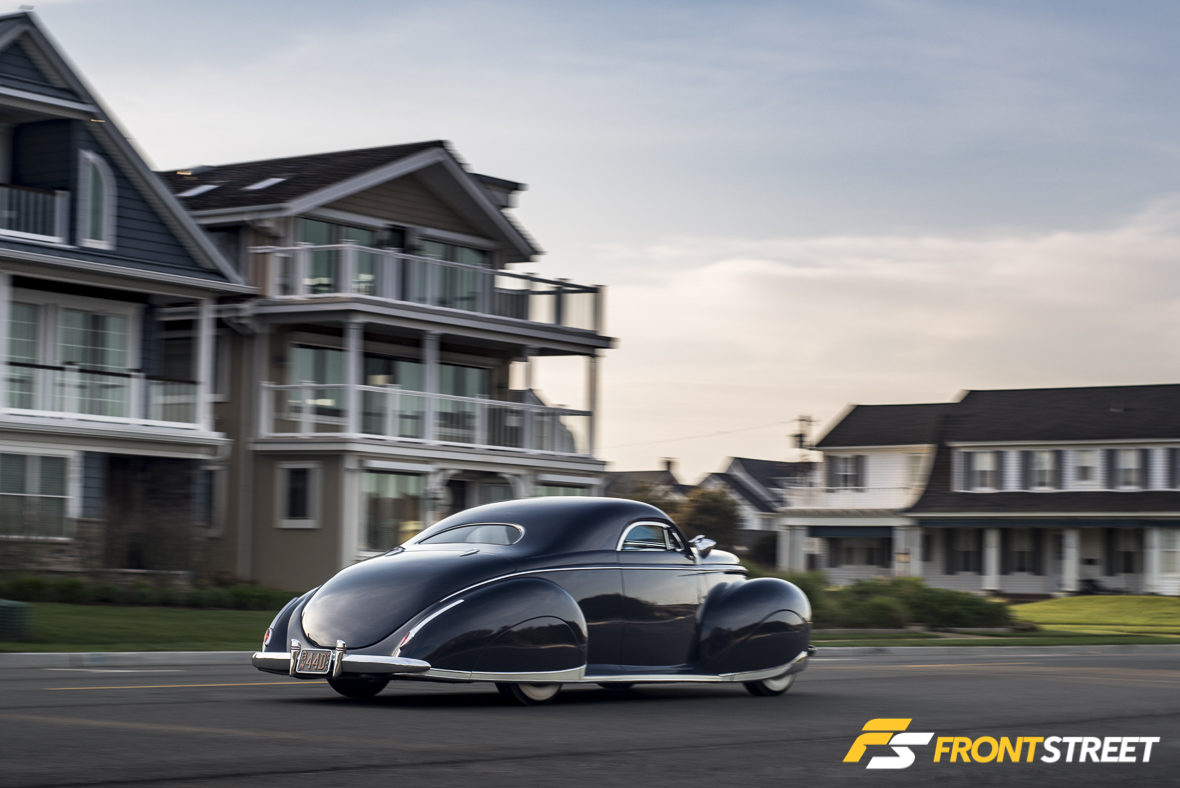
Okay so, now can we talk about the exterior? Alright, let’s go for it. First, I’ll start off with the most important part—the entire body consists of custom formed handmade steel panels and trim. Just let that sink in for a second… The entire body is custom hand formed steel.
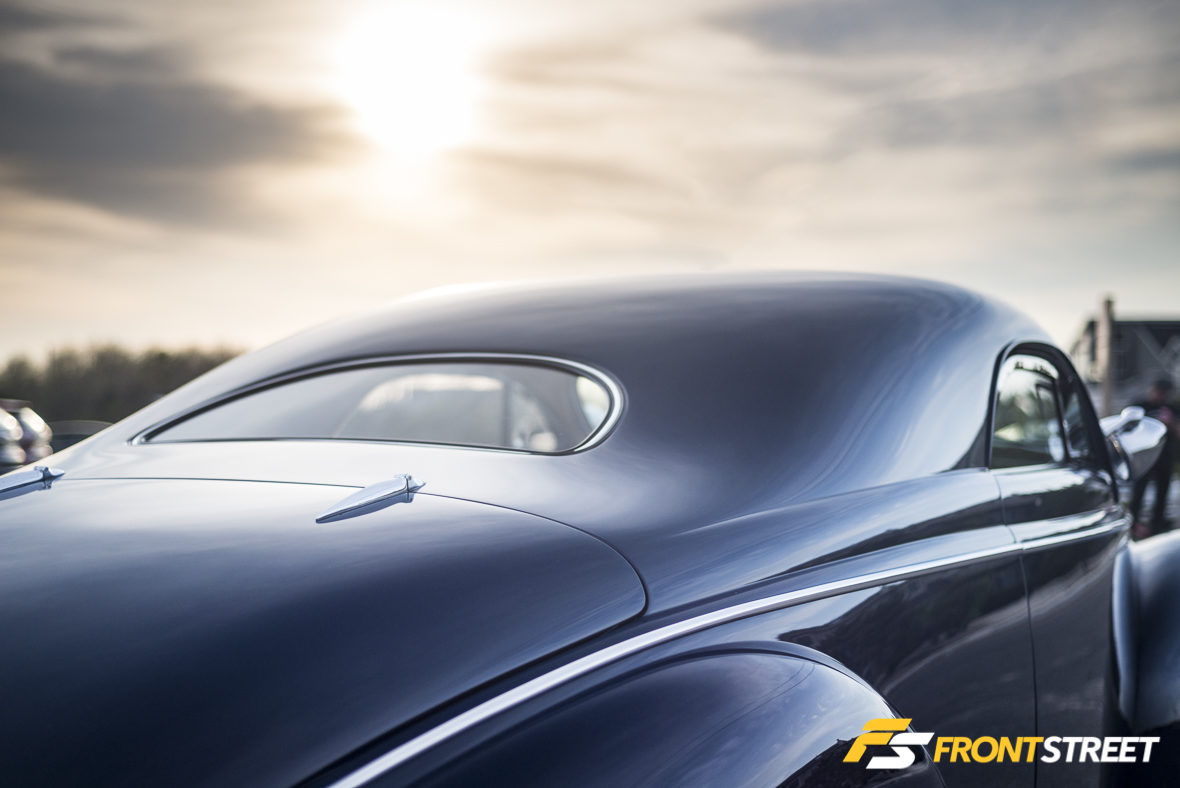
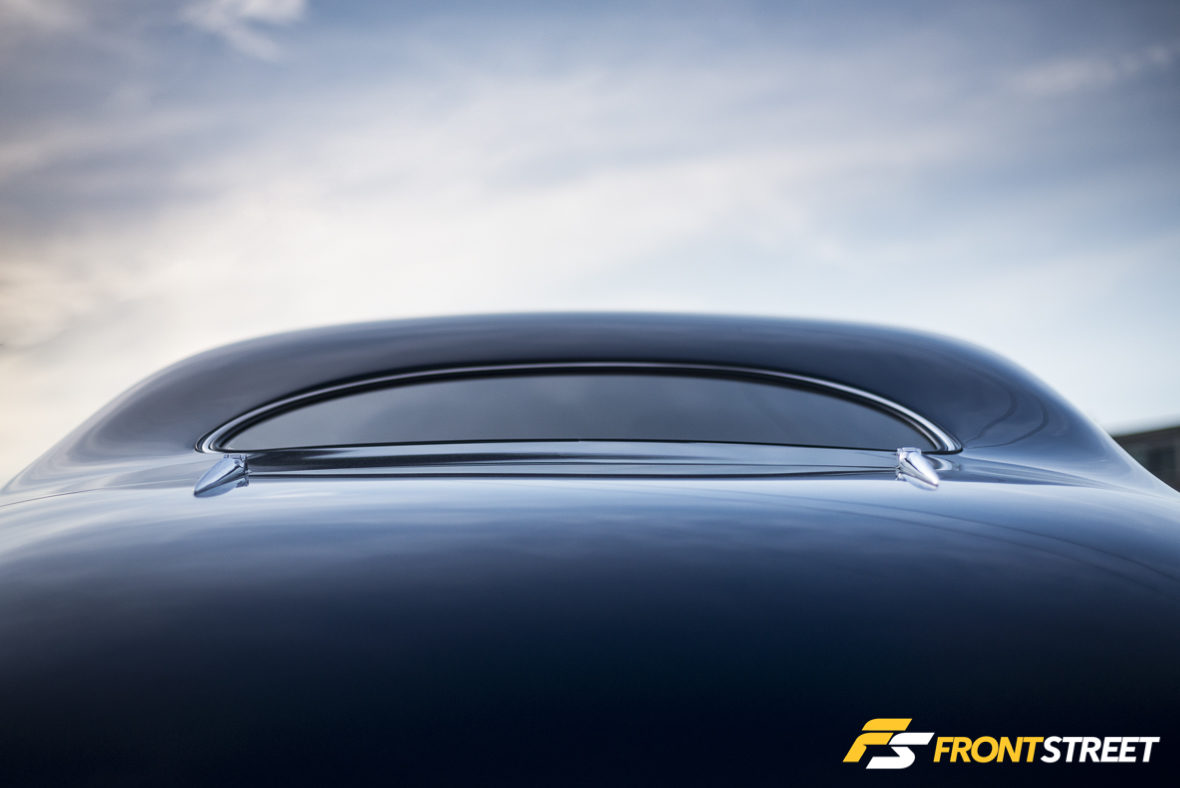
No fiberglass here. No heavily cut, body filler sealed connections. No factory parts from other cars. No sir, this car wears its own unique suit of armor from the front to the back. Have you ever tried to form anything out of metal, let alone try to get steel to this fit and finish? It’s a gigantic undertaking. It requires extensive knowledge, tooling, an immeasurable amount of patience, and this entire car was made in this fashion. It’s a remarkable trait that shouldn’t go undisclosed.
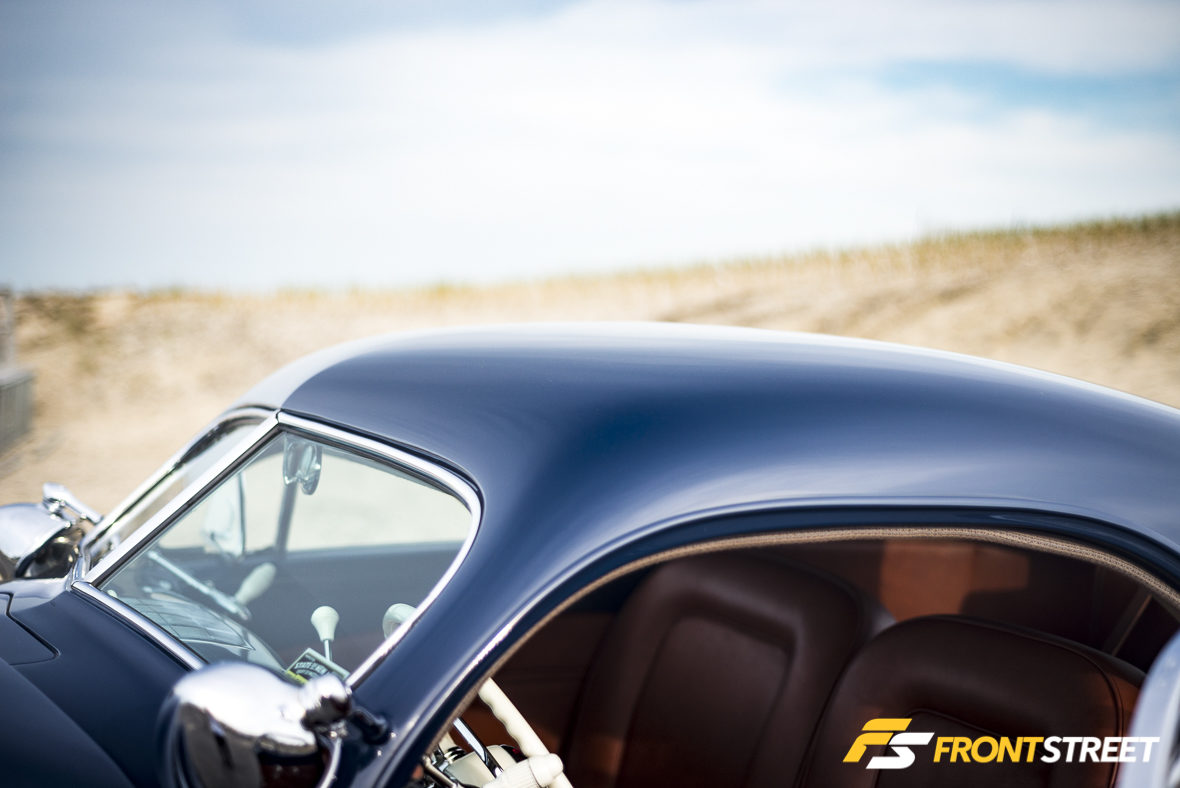
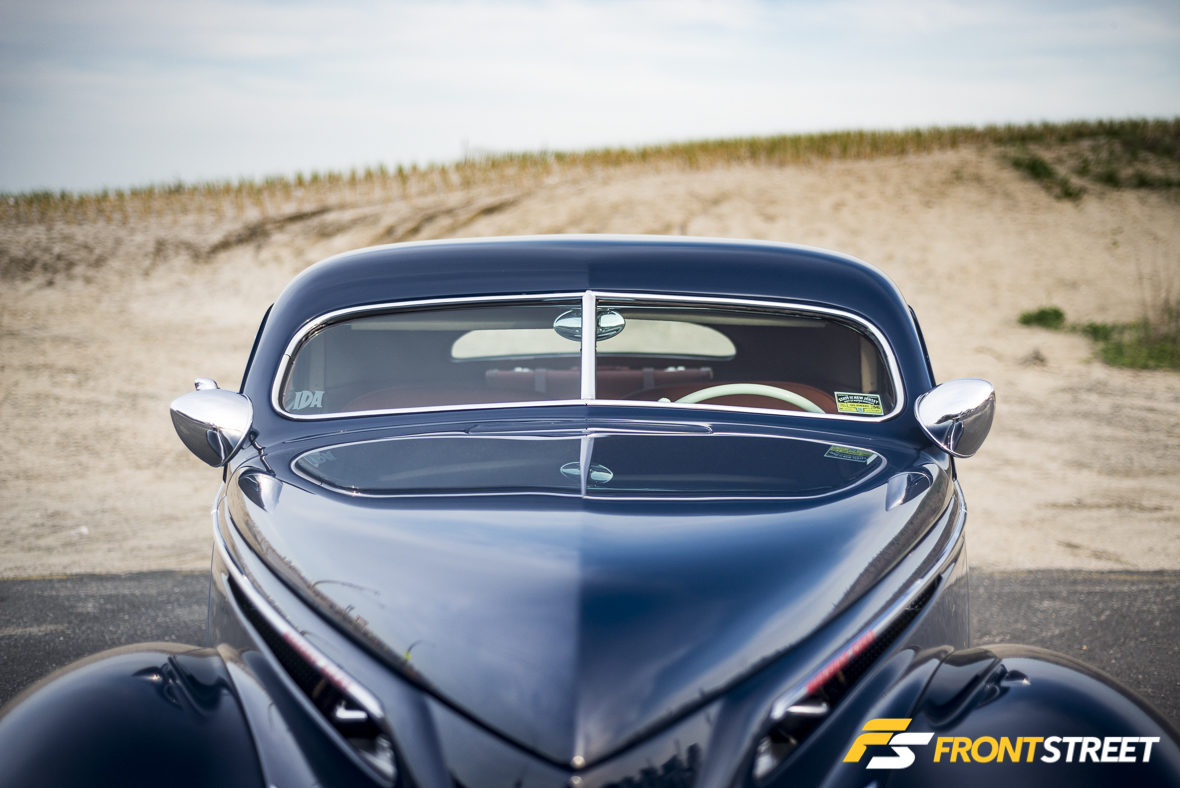
On the roofline, it was chopped and sectioned down to the shrunken stature it currently possesses. However the lines are not as long and sweeping on the OEM Mercury roof, so a completely exclusive roof was designed and created, which ties into the rest of the steel body created for this car.
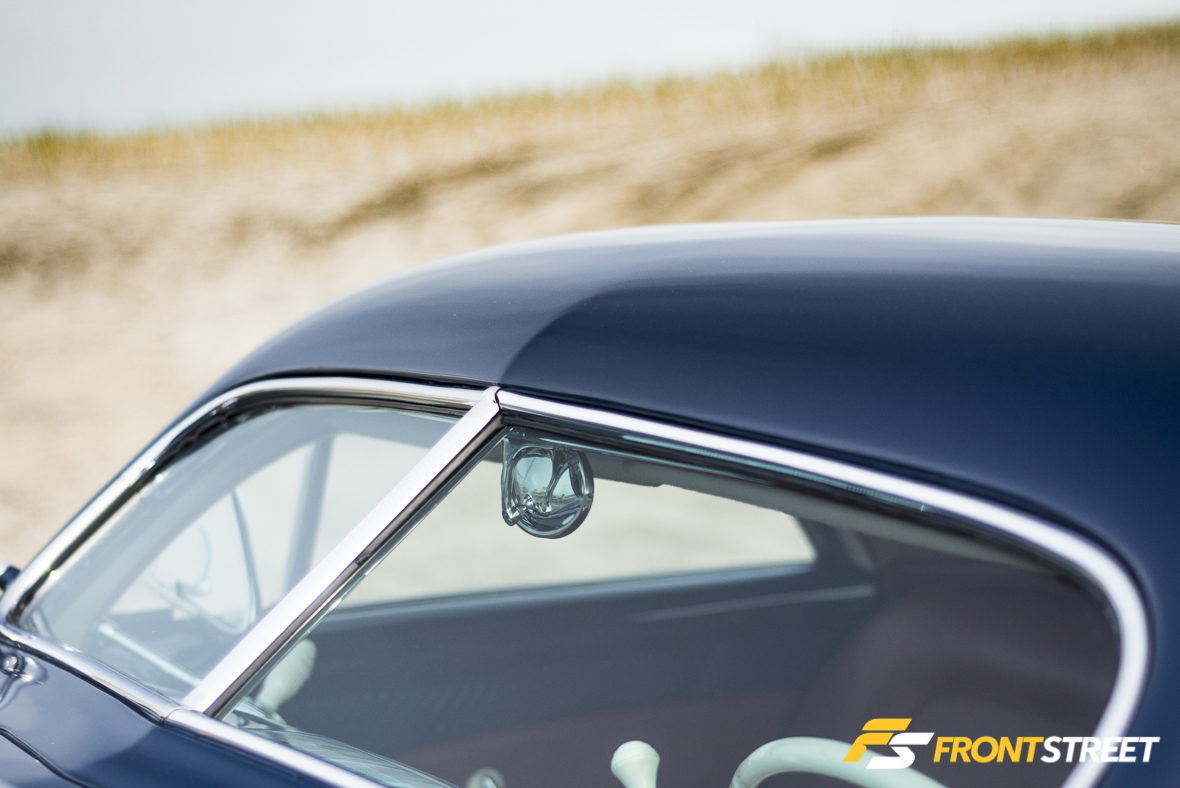
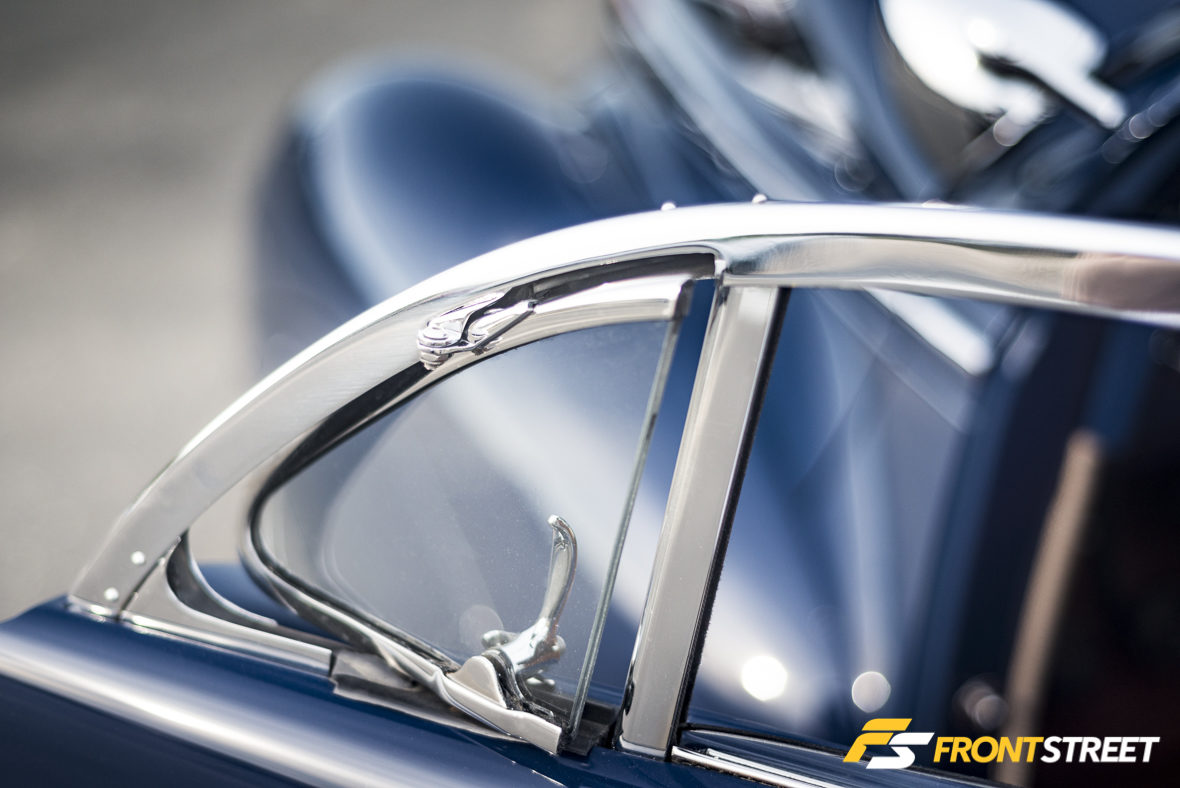
While lowering a roofline offers a sleek look, that causes issues with reusing the OEM glass, and its associated trim pieces. Distinctly measured glass was created for this project, and handmade metal trim pieces were fabricated in-house.
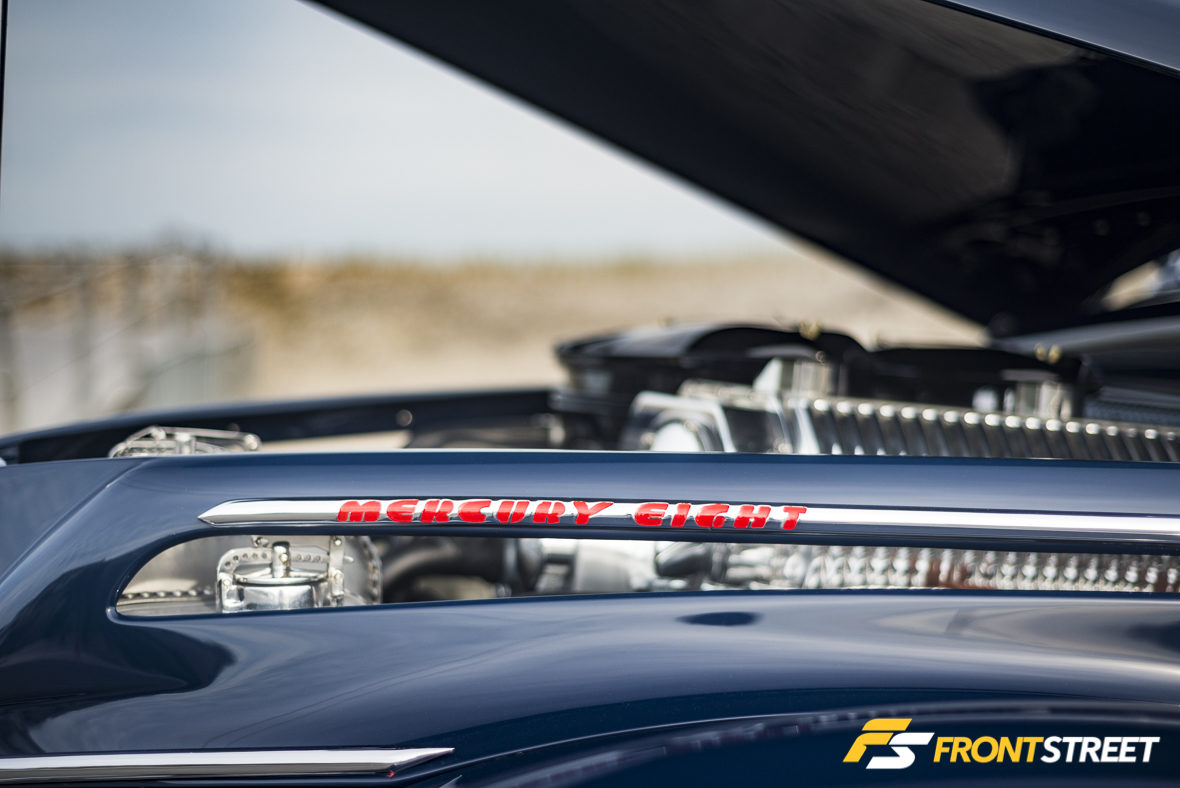
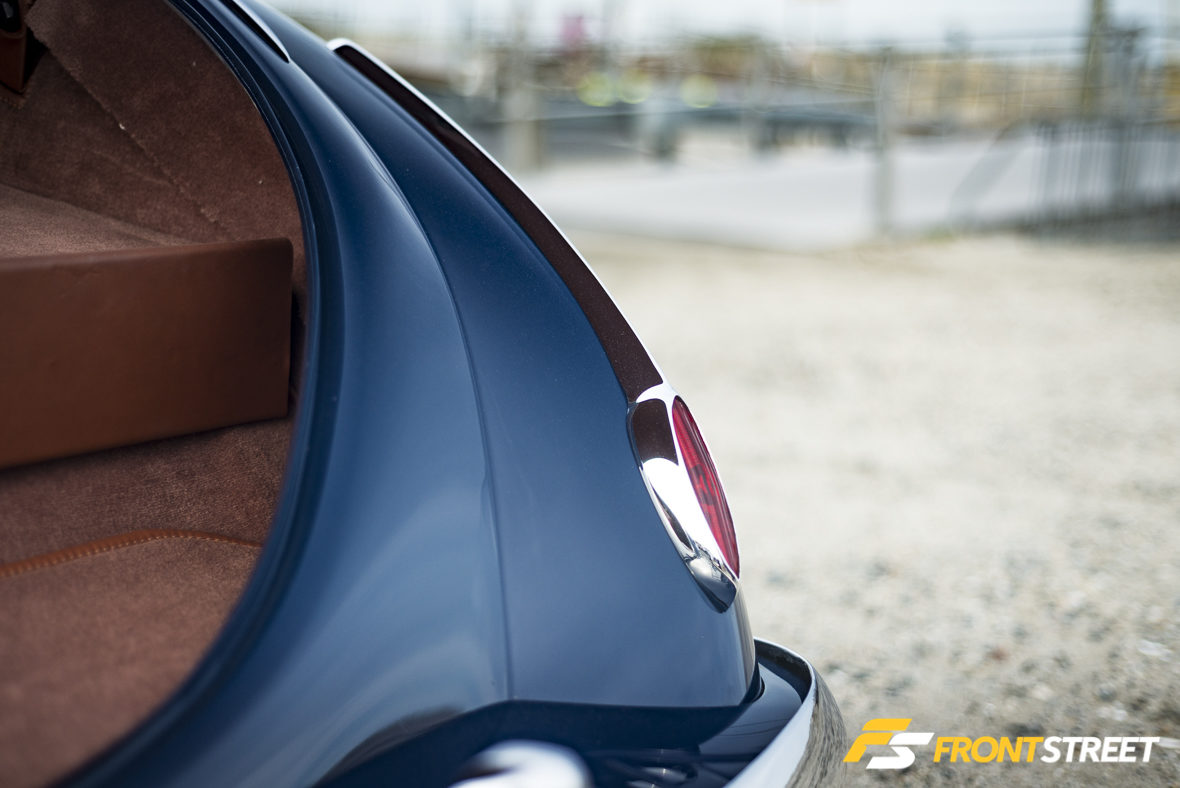
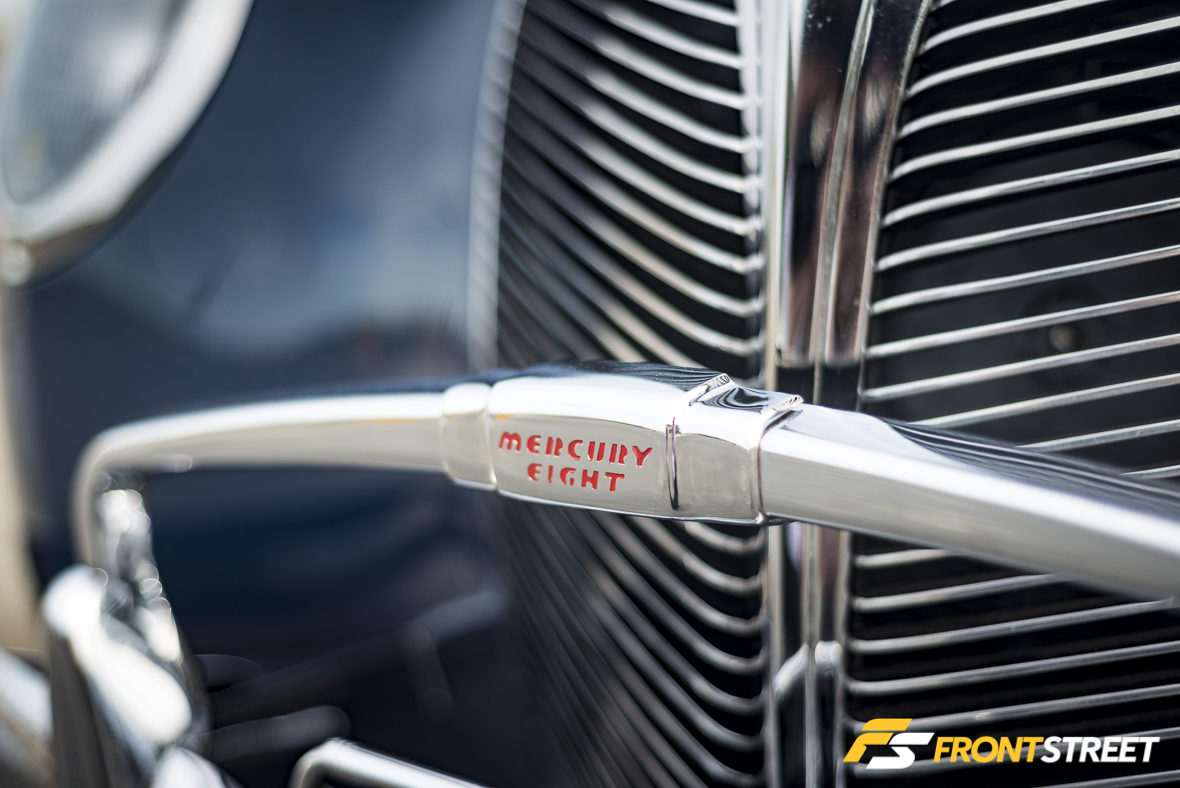
Not just window trim was created, though. Additional created trim pieces find their way around the entire chassis, from a clever fender trim emblazoned with “Mercury Eight” in a font that mimics the original badge, to a subtle garnish on the front bumper with the same reimagined badge.
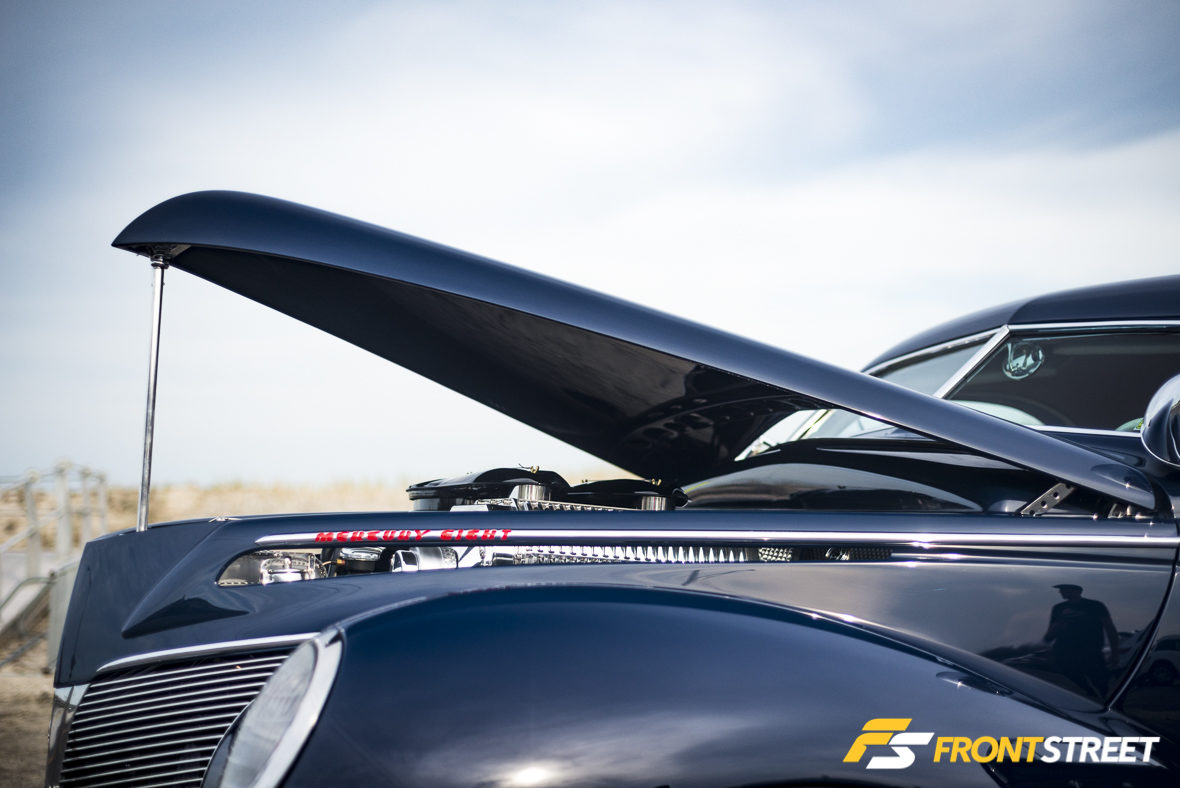
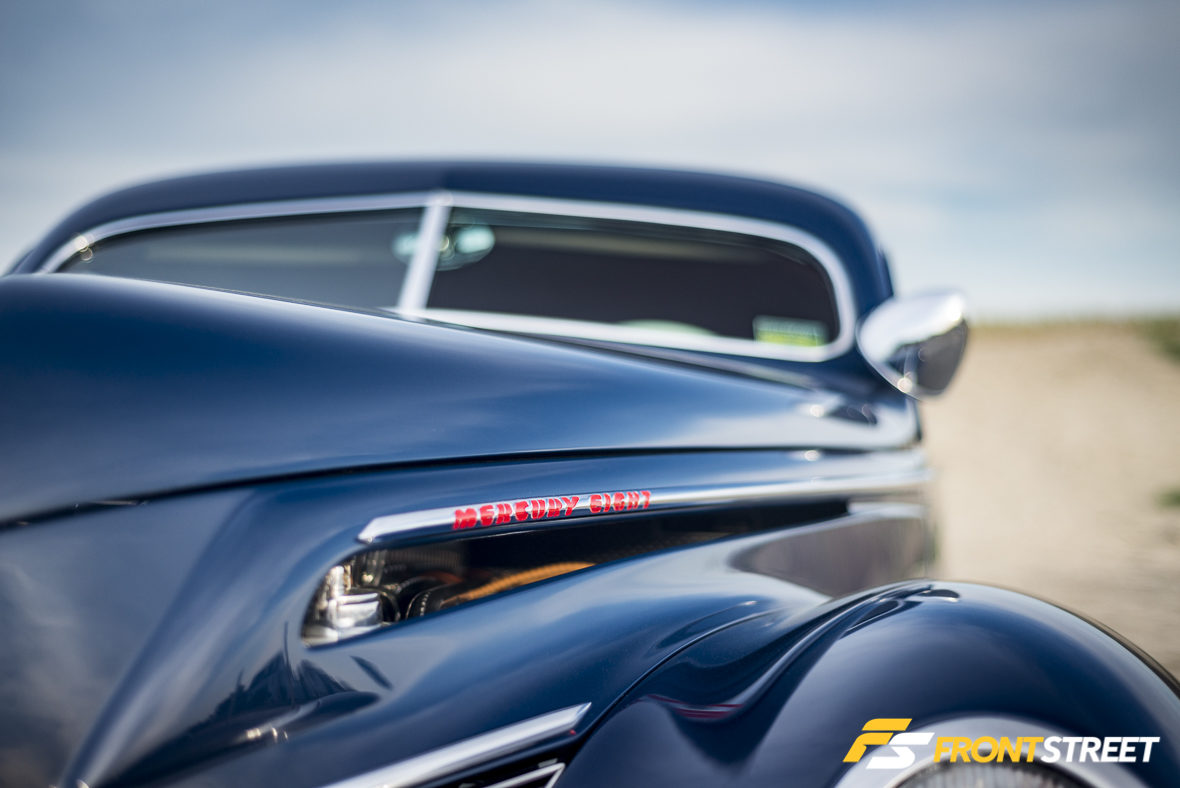
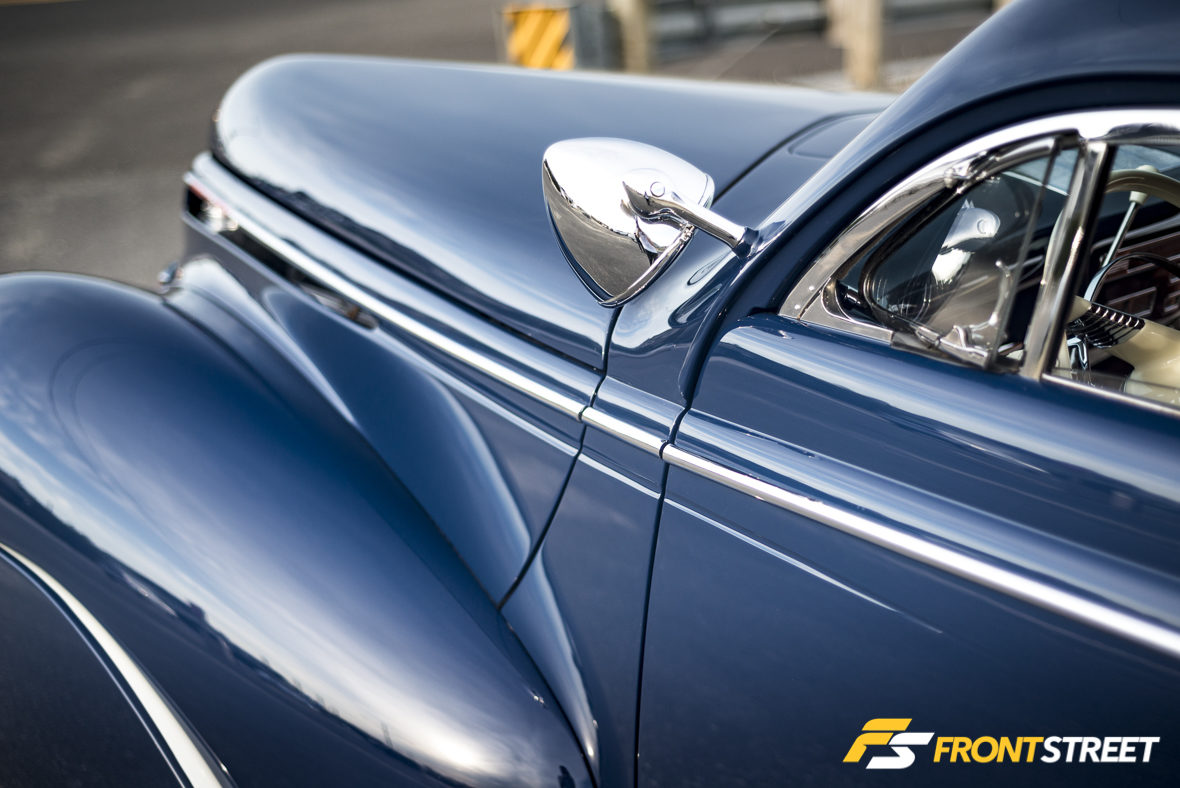
And it’s not just the fact that Ida and his team made things like the unique streamline window in the fender, but the fact that its line carries into accompanying panels, and that each panel’s fit, finish, and design looks like it’s completely original.
“It was all made to look like actual car parts. Care was taken so that each piece didn’t appear to have a fabricated look,” says Ida.
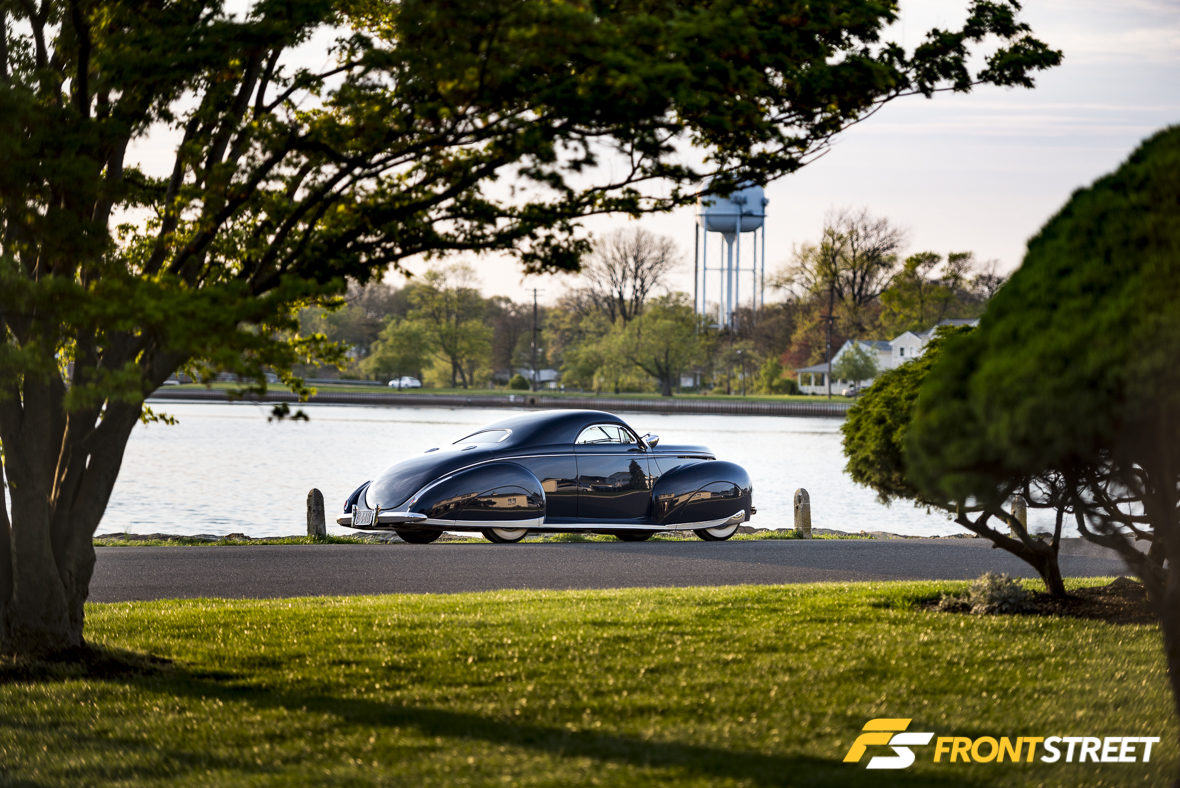
I’ll admit that while photographing the car, I had to ask Ida multiple times what important elements of the body I should be getting images of, because I couldn’t tell what had been tampered with, and what was original. After having some time to examine each individual panel and compare it with the example I linked to earlier in the article, I’ve gained an even better appreciation for the quality of work Ida put into this vehicle. The truth is, I probably could have photographed every piece of the car three times over, and I would still be missing newly designed elements that looked original.
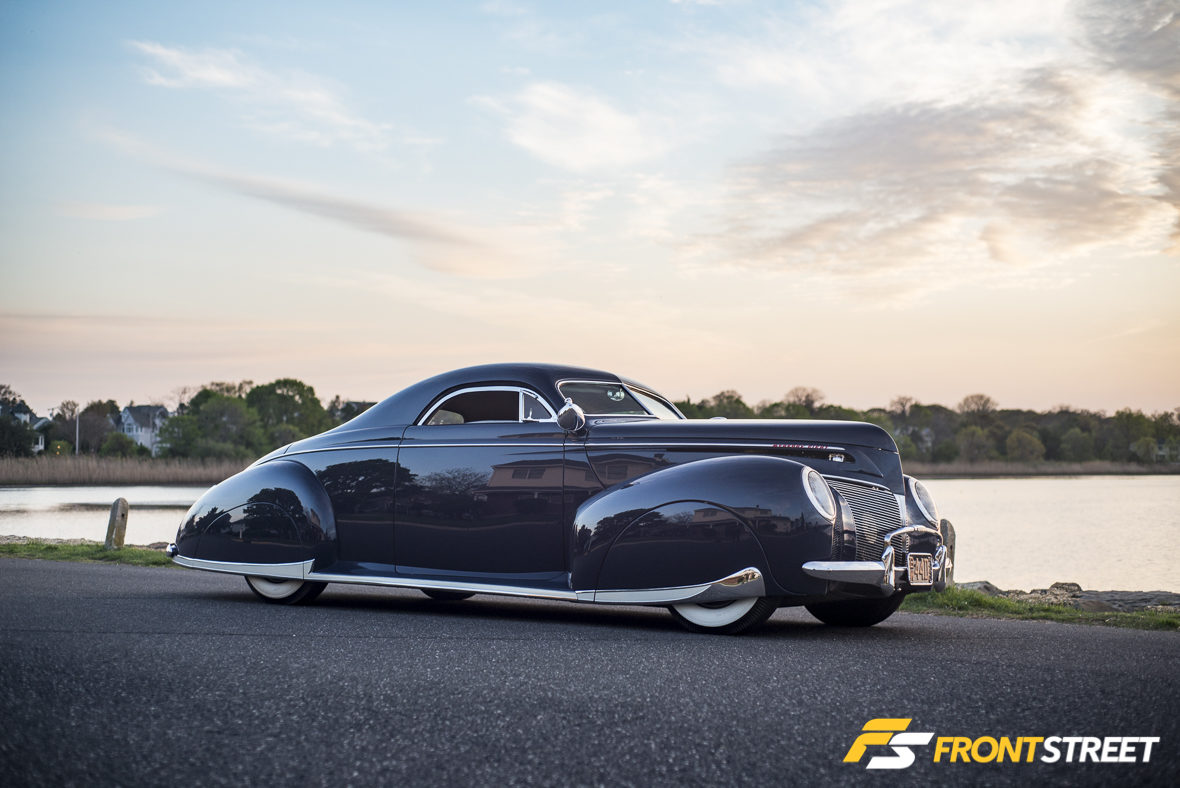
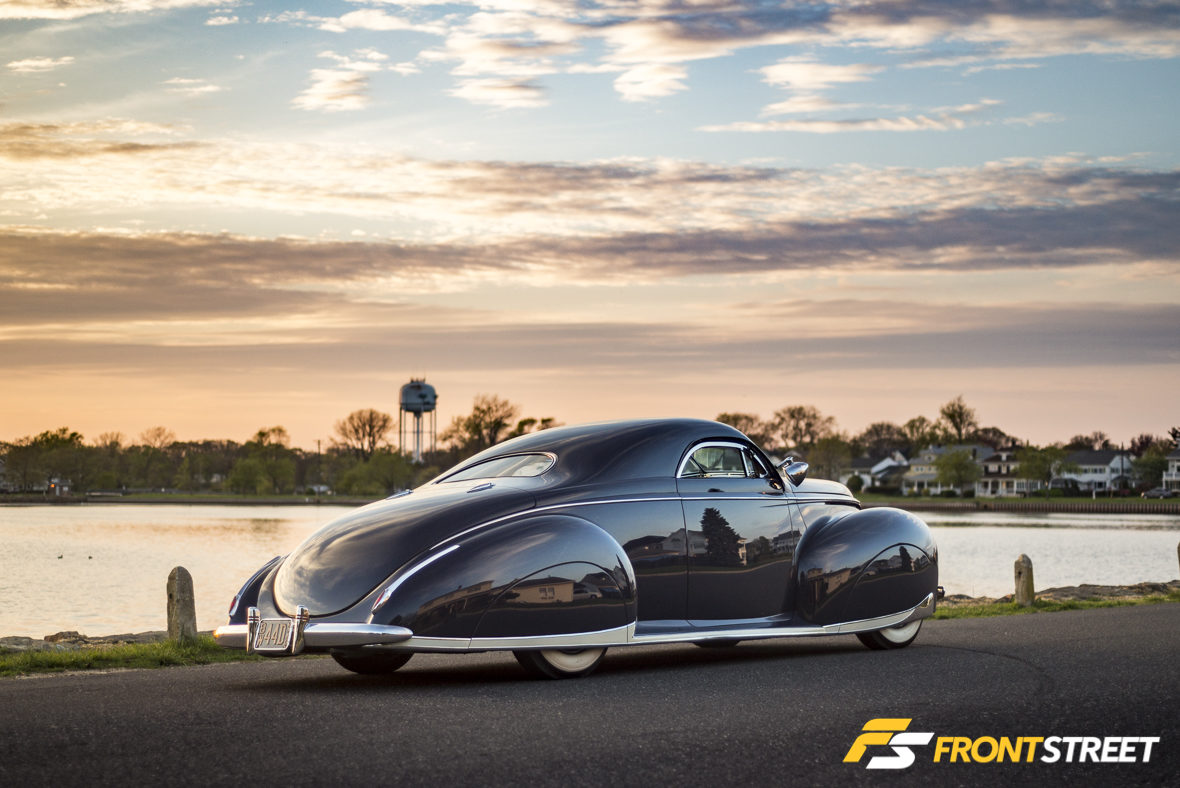
The paintwork is just as incredible as the panel production, too. The body is covered in an exclusive mixture of Spies Hecker paint, which Ida named “Kiely Blue”. The name references not only the owner, but also the similar blue hue that is painted on every vehicle in Kiely’s companies’ fleet.
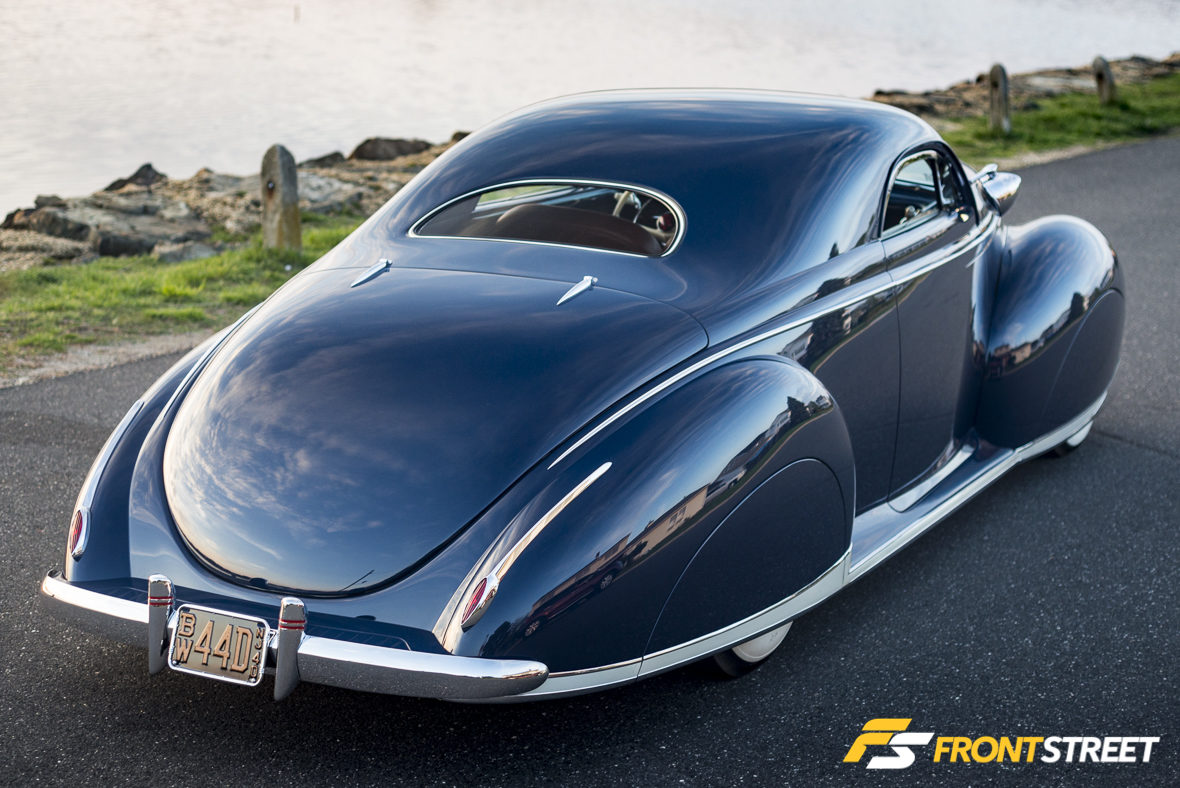
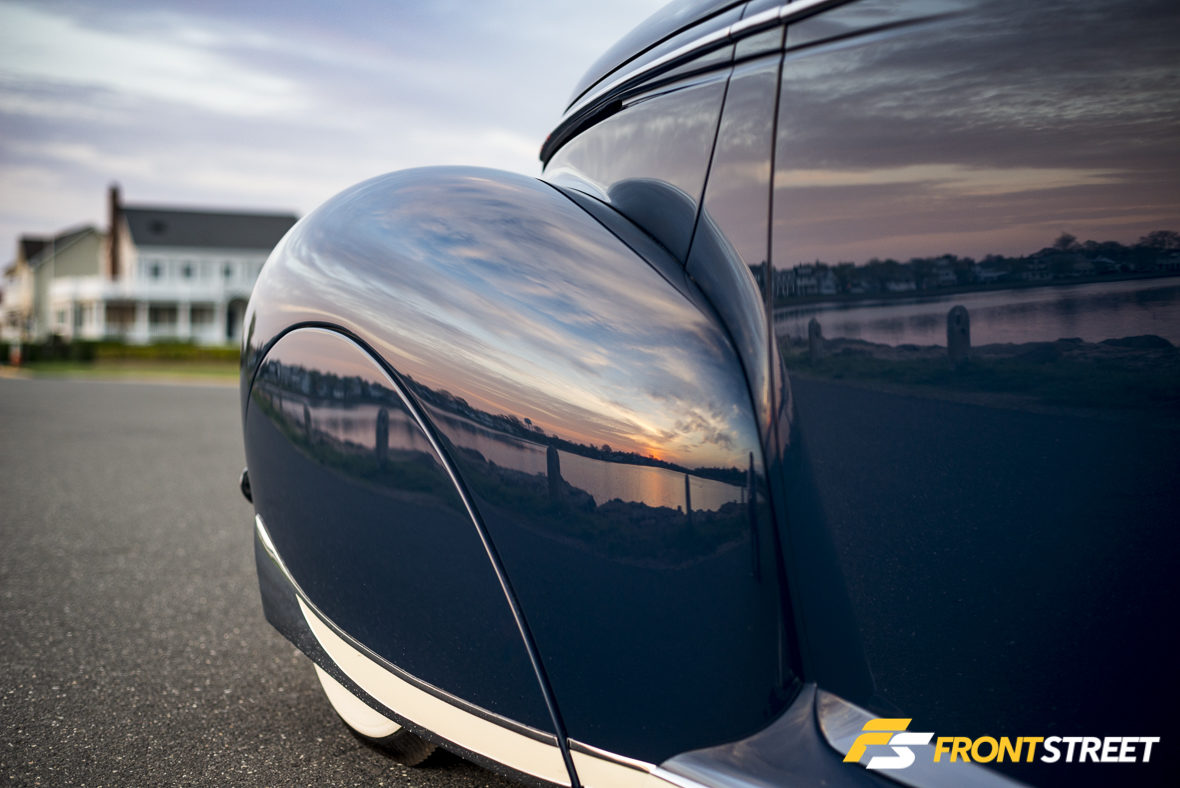
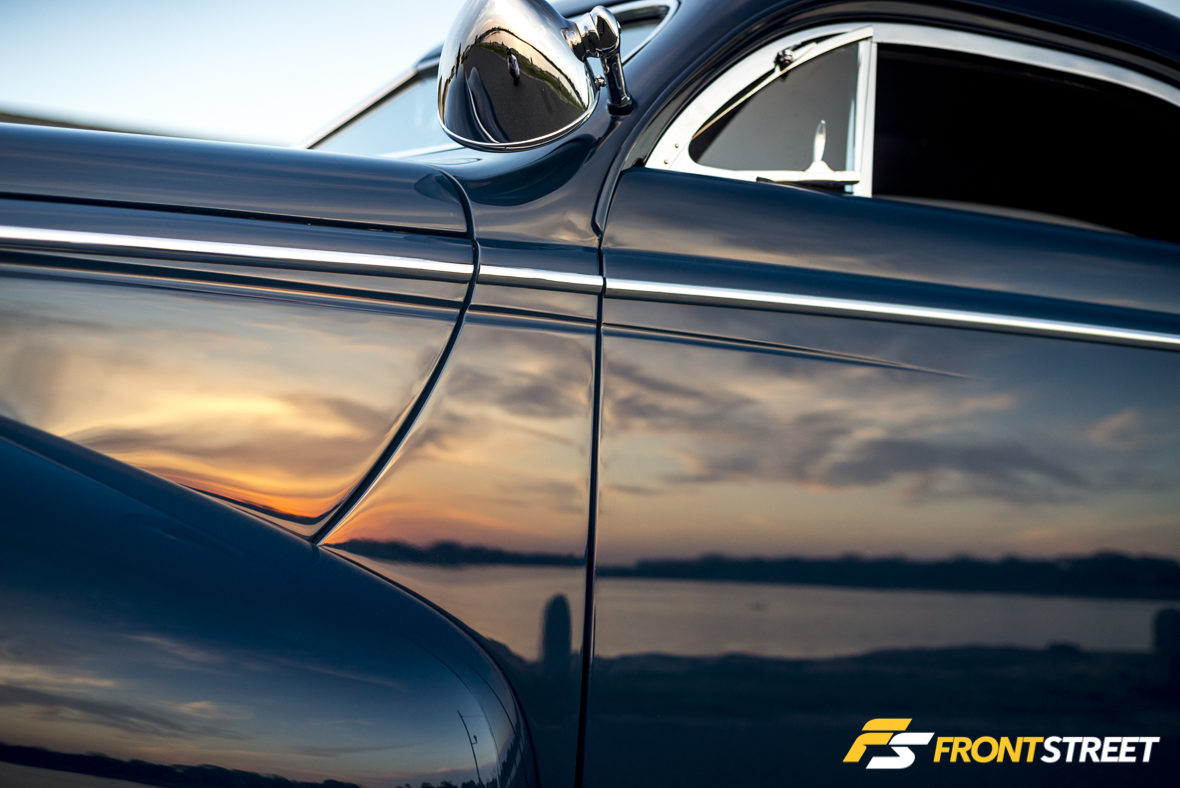
There is not a single visible imperfection on this car. The uninterrupted reflections in every image can be the judge. I learned the hard way, when photographing a car of this caliber, you need to be cognizant of your surroundings and their effect on the reflections.
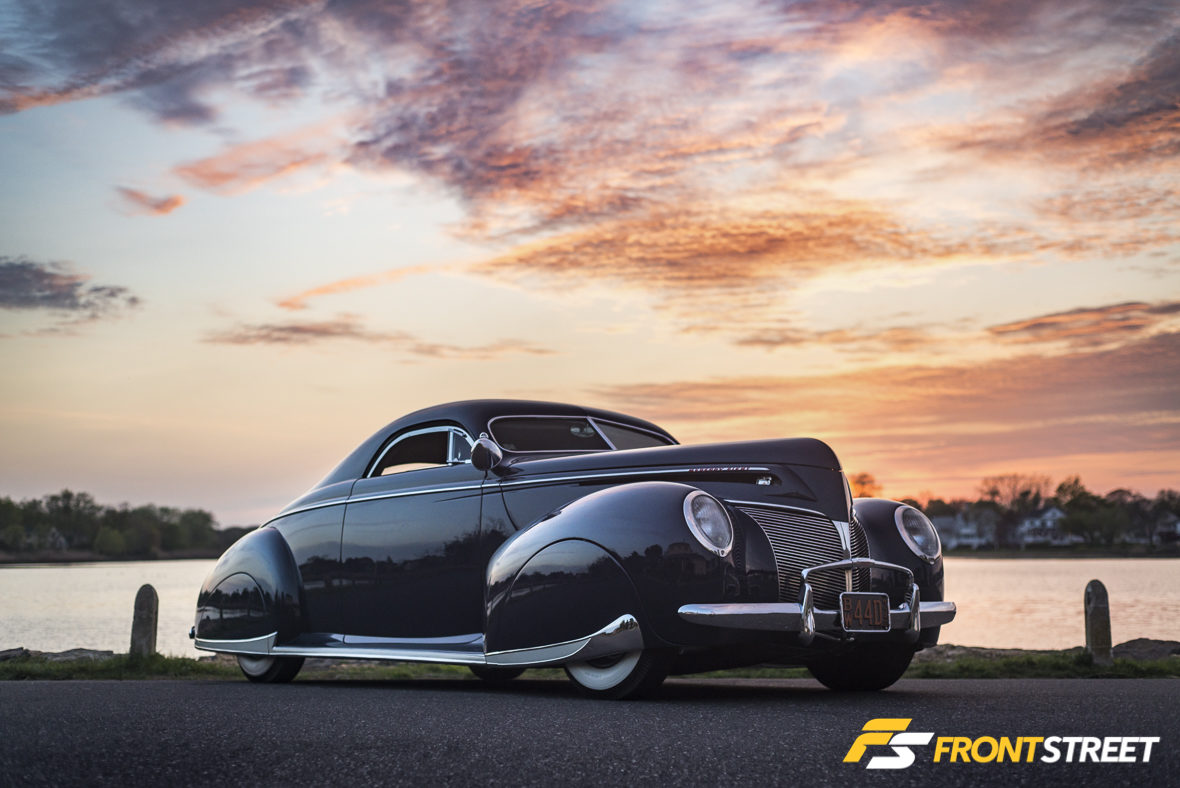
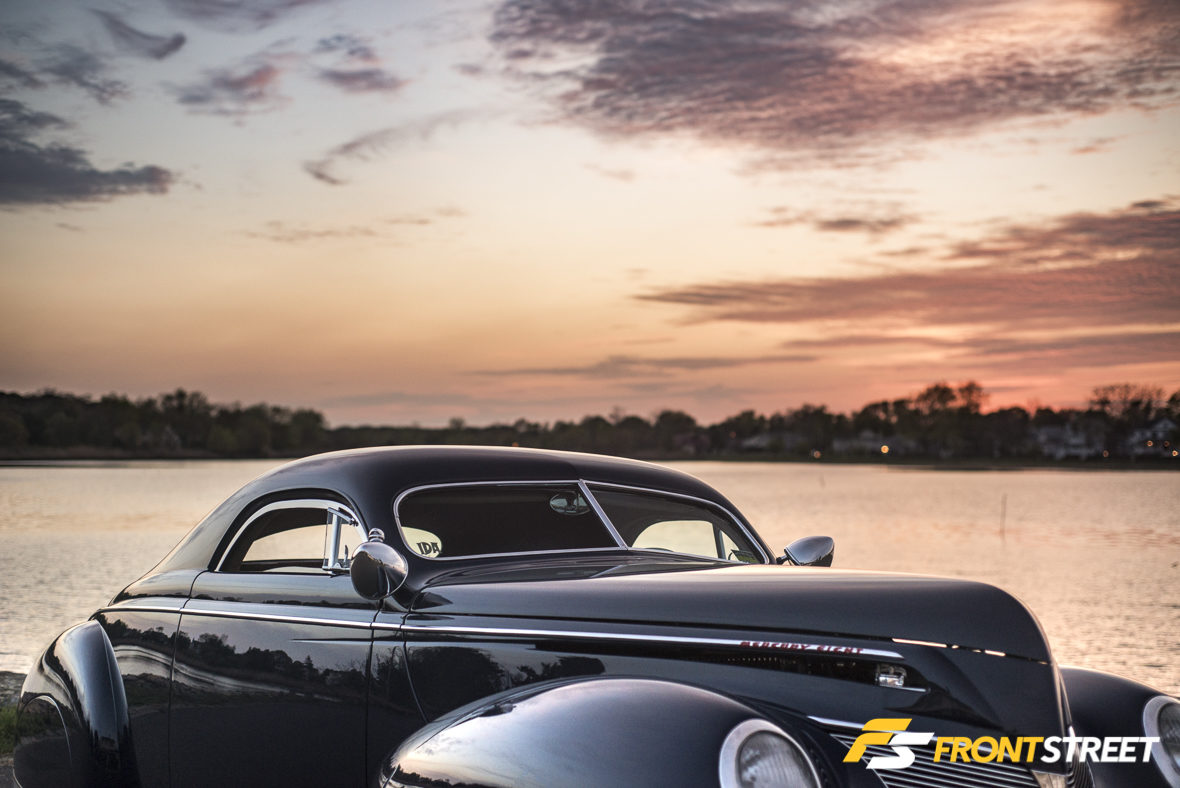
In total, over 12,000 hours of labor, over the course of six years have been invested into the creation of this car. It’s no wonder why after being completed the car has attained all of the following prestigious honors in such a short time. Starting with winning “Best in Show” on its debut at SEMA 2016, “World’s Most Beautiful Custom” and “Best Engineered” at Sacramento Autorama, Gene Winfield Award, “Best Custom” and “Best Engineered” at Carmel Concours d’Elegance in Monterey, The Race of Gentelmen’s “The Crown Jewel”, Goodguys Gold Award, and “Best Custom” at Greenwich Concours d’Elegance.
“I like that this car has been welcomed at so many Concours d’Elegance events. I feel like it’s had a role in modern coach built cars being recognized at these events that have historically ignored modern custom cars,” said Ida.
“I’d like to thank Jack and Carolyn Kiely for allowing us to create this car for them. Bob Ida, Sr. for his incredible machine work, and Ryan Klimchock for his unrelenting work in the shop.”
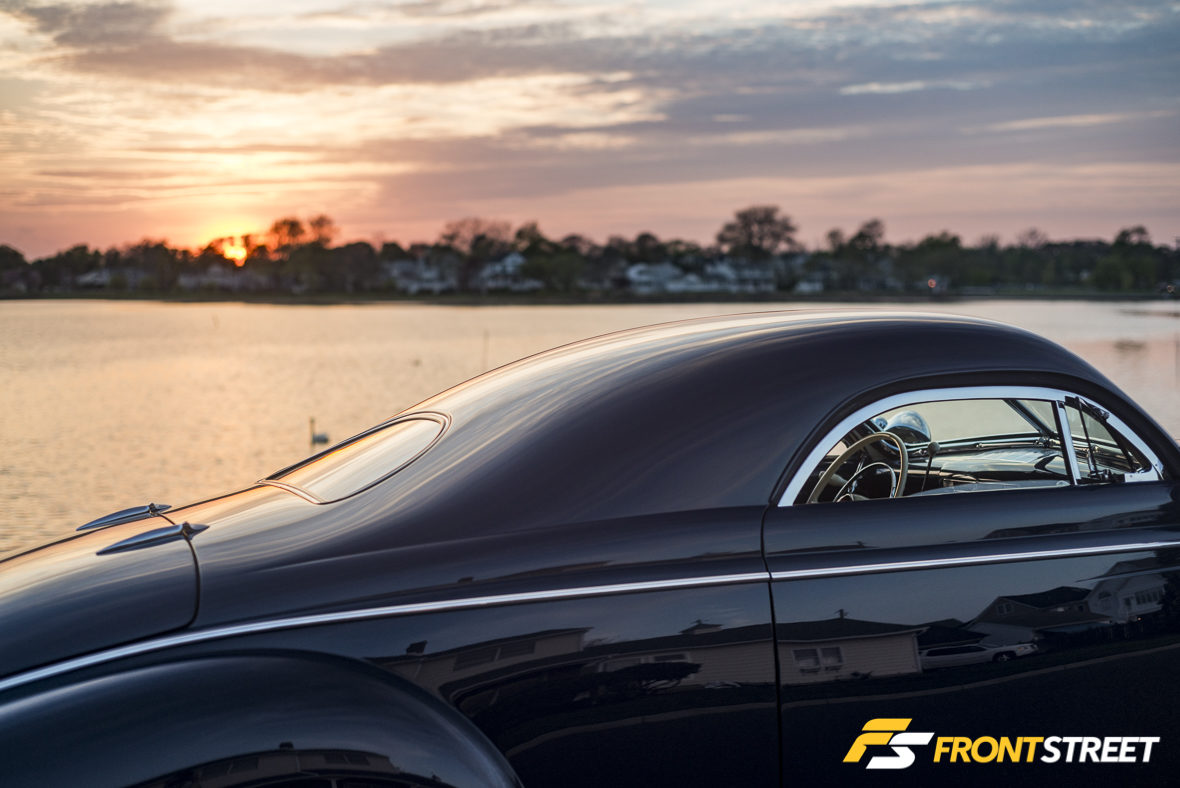
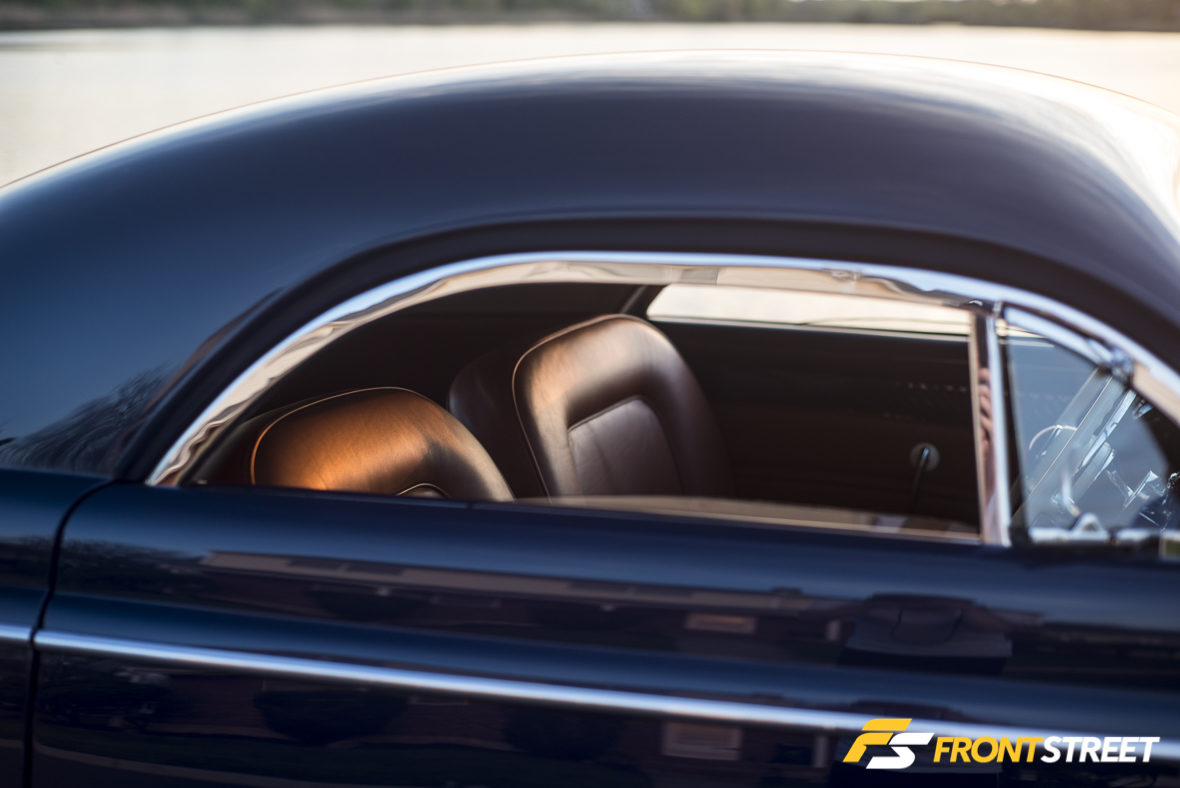
By the end of our photoshoot, Ida was approached by at least fifty different people flush with admiration for the car. “What kind of car is it,” was the first question asked by each onlooker. To which Ida politely, gratefully, and exuberantly answered—but with shades of grey. Explaining the vehicle started as a 1940 Mercury Eight, but there just isn’t enough of that car left in the final product to continue calling it that, so it is the 1940 Mercury Custom. It is only at an extreme level of modification that a car stops being referenced by its original moniker, and instead begins a new life as its own unique creation.
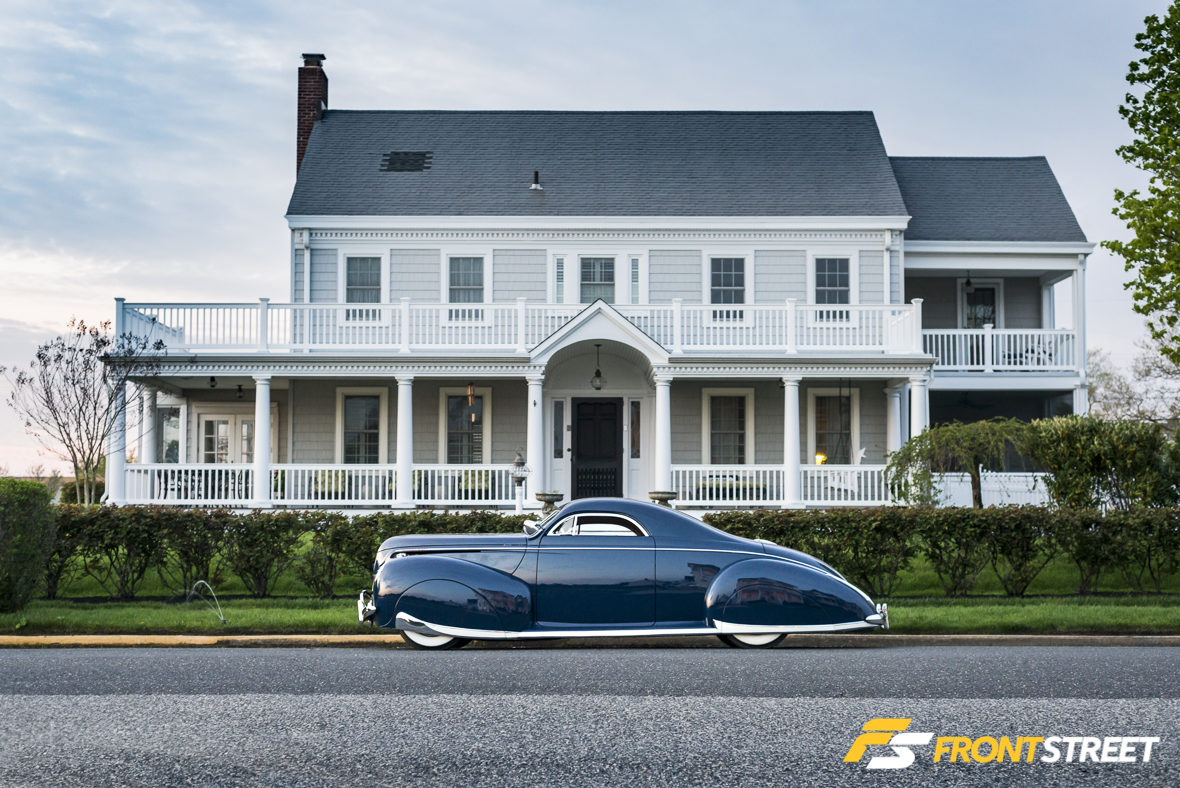
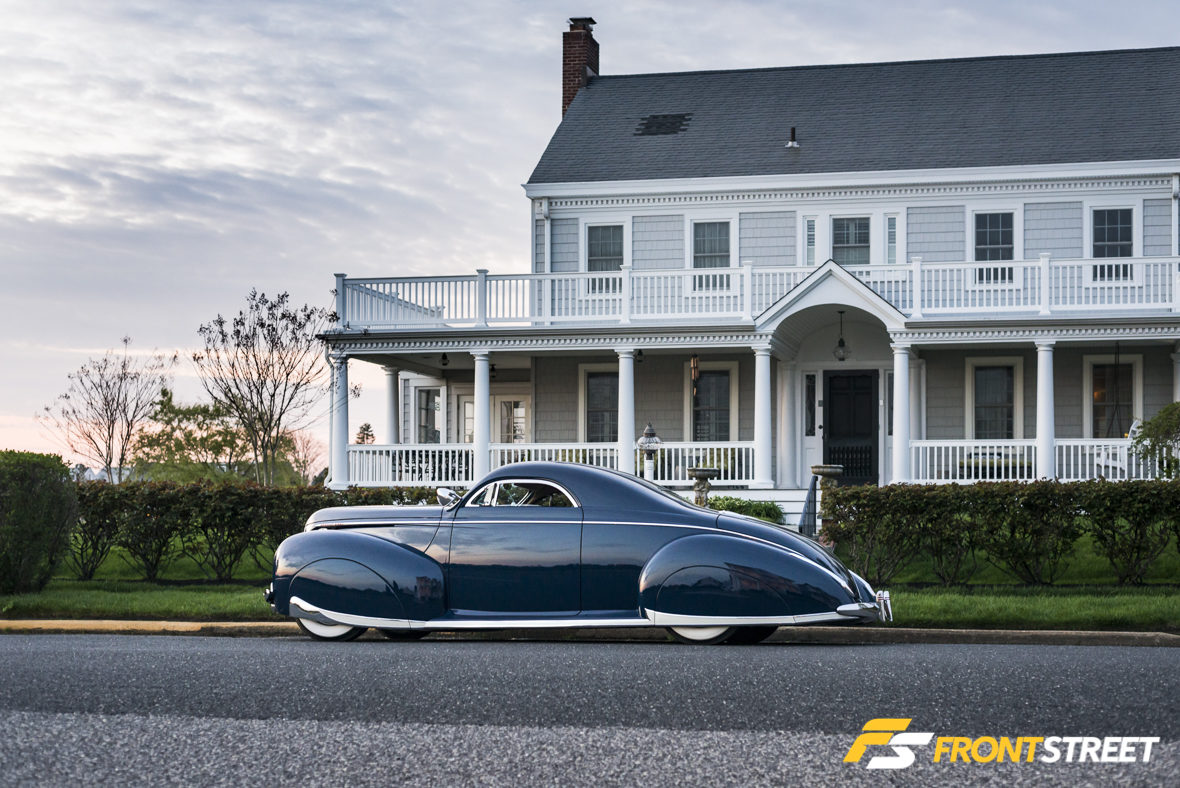
This car will undoubtedly continue to inspire builds of a similar premise. By reimagining nearly every piece of the original Merc, Kiely’s and Ida’s initiative has not only given new life to this chassis, but to a new caliber of vehicle capable of crossing over existing automotive borders. In doing so, he has planted a new set of seeds, which will sprout new builders in another fifty years time. But Ida’s done something more than create a modified version of an existing car, and while the passion and emotion encompassed in this car can never be duplicated, he’s created a one-off masterpiece to be adored and imitated for years to come.

















































